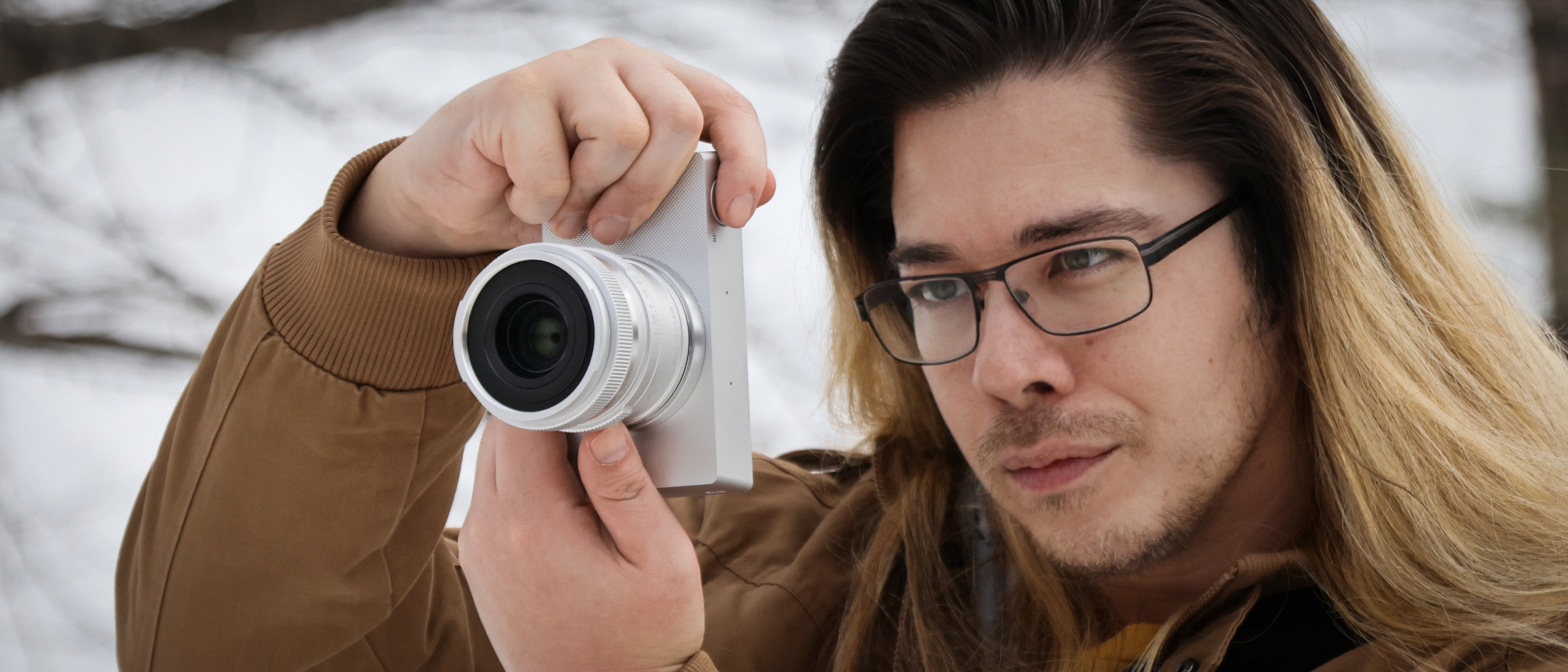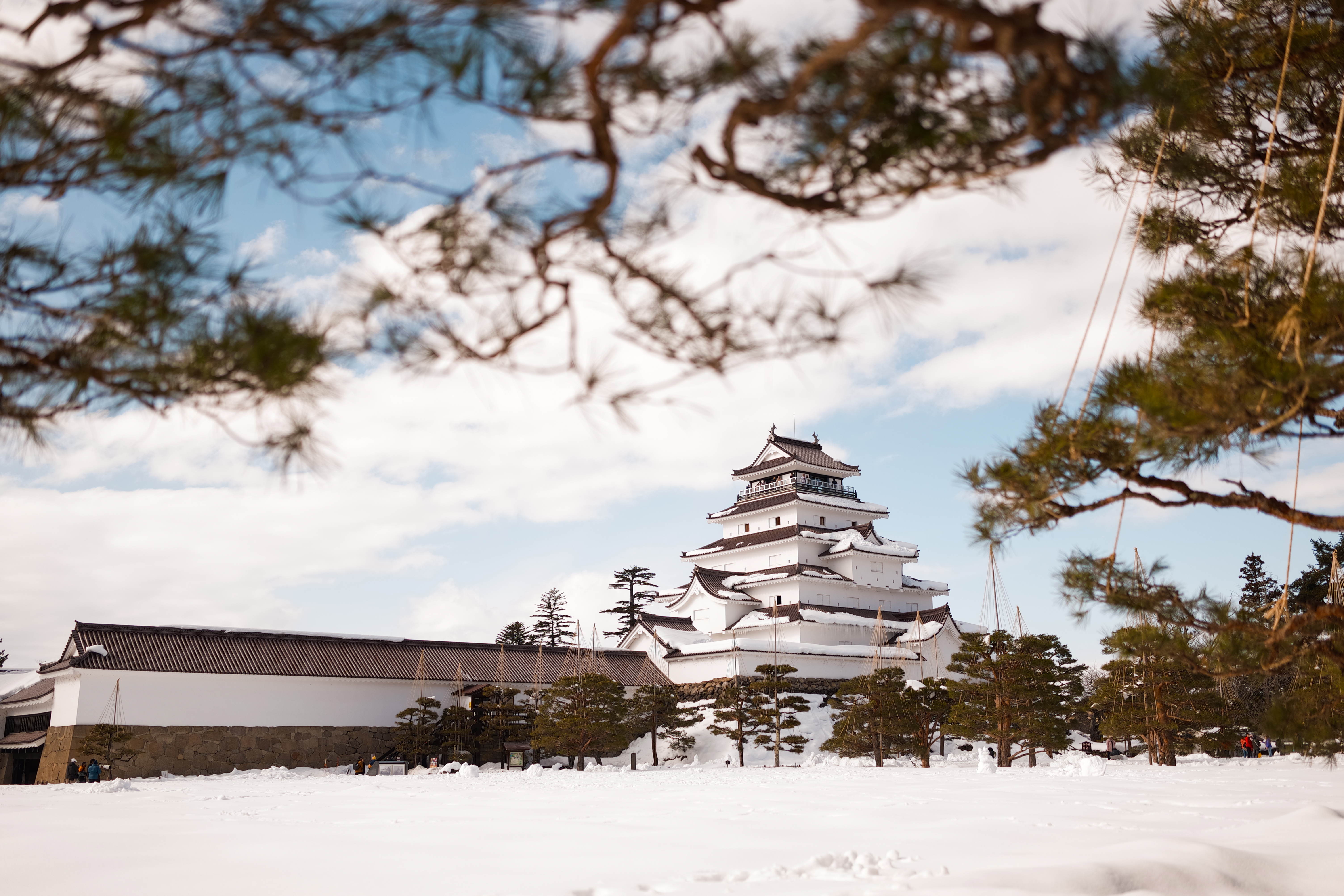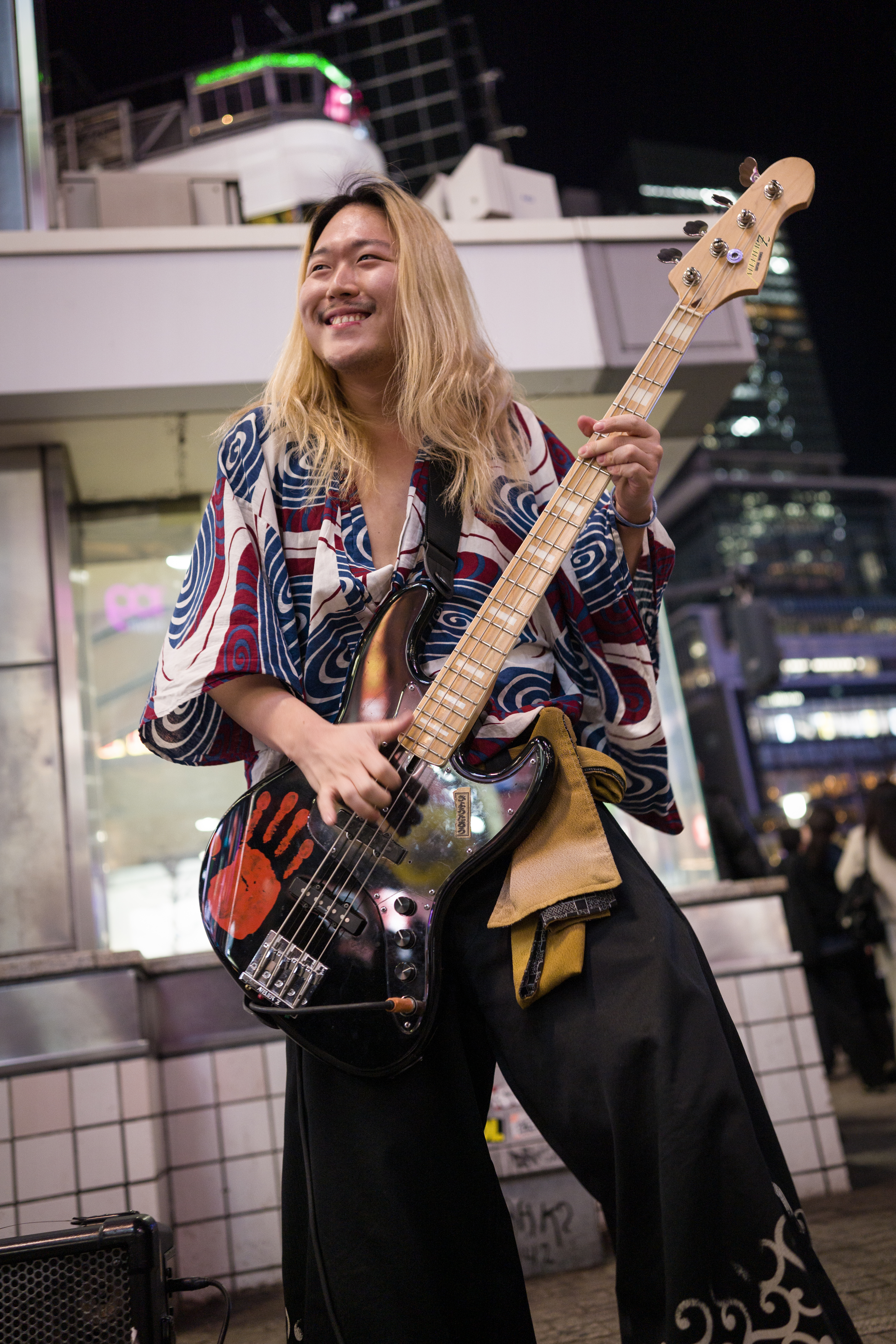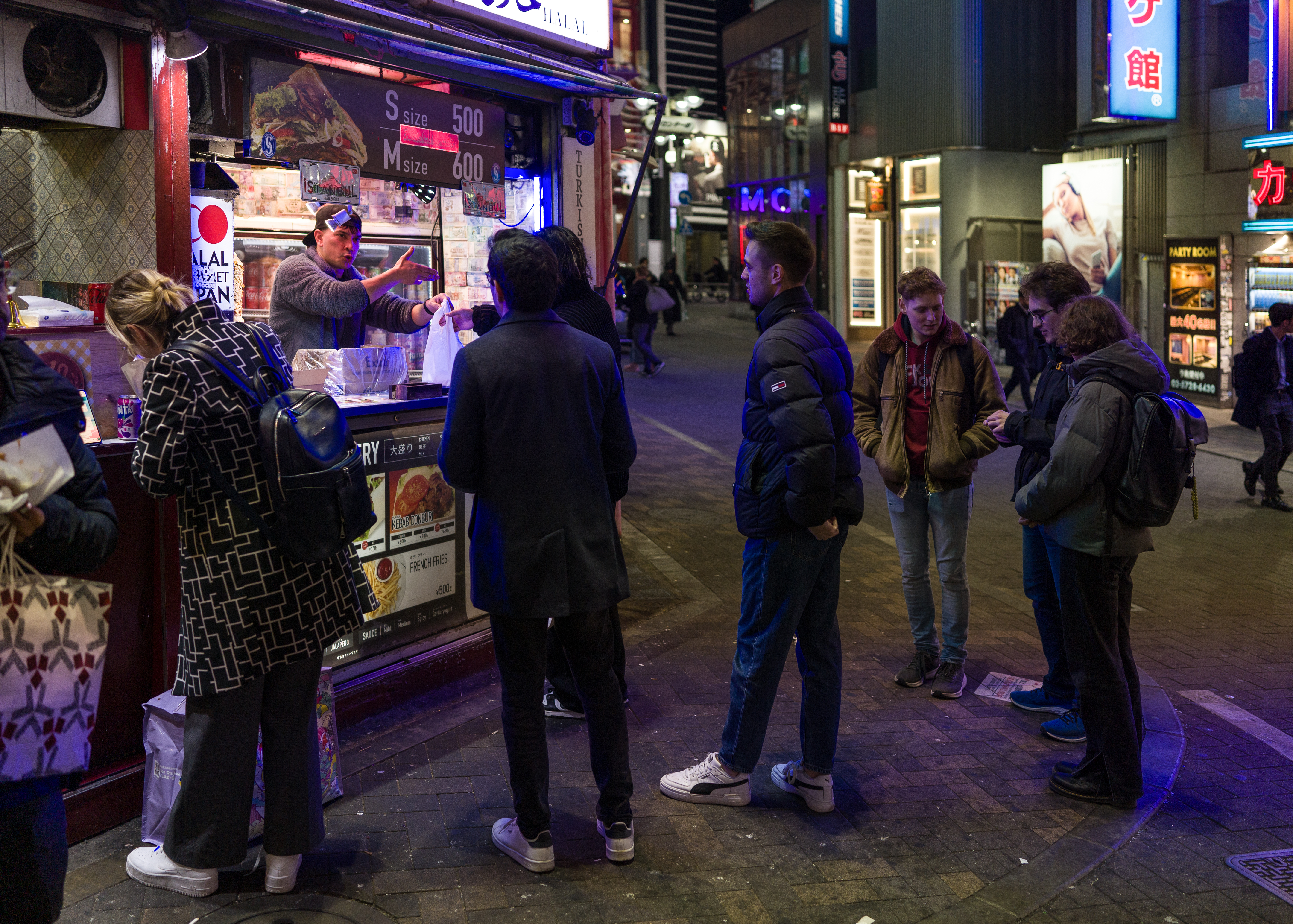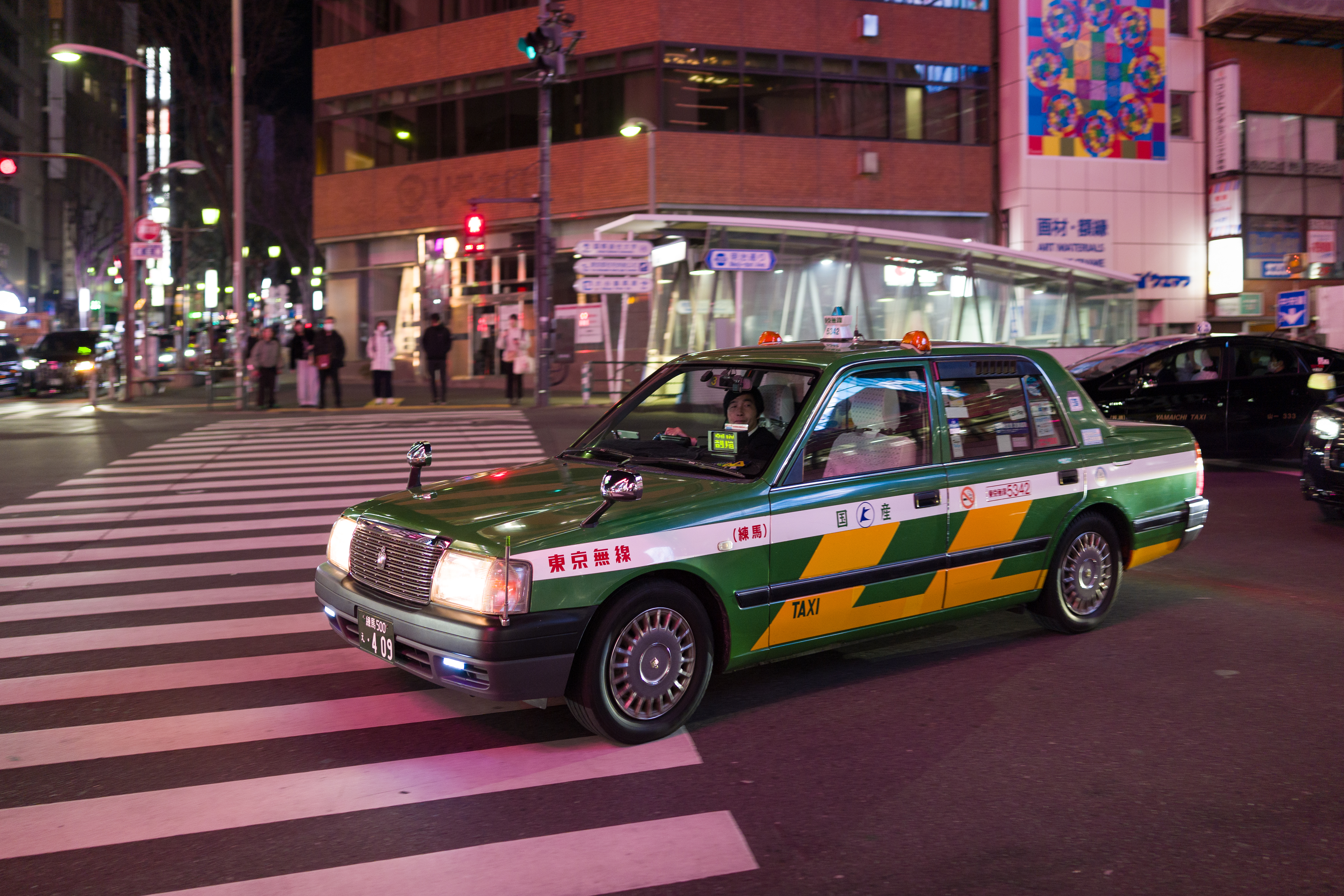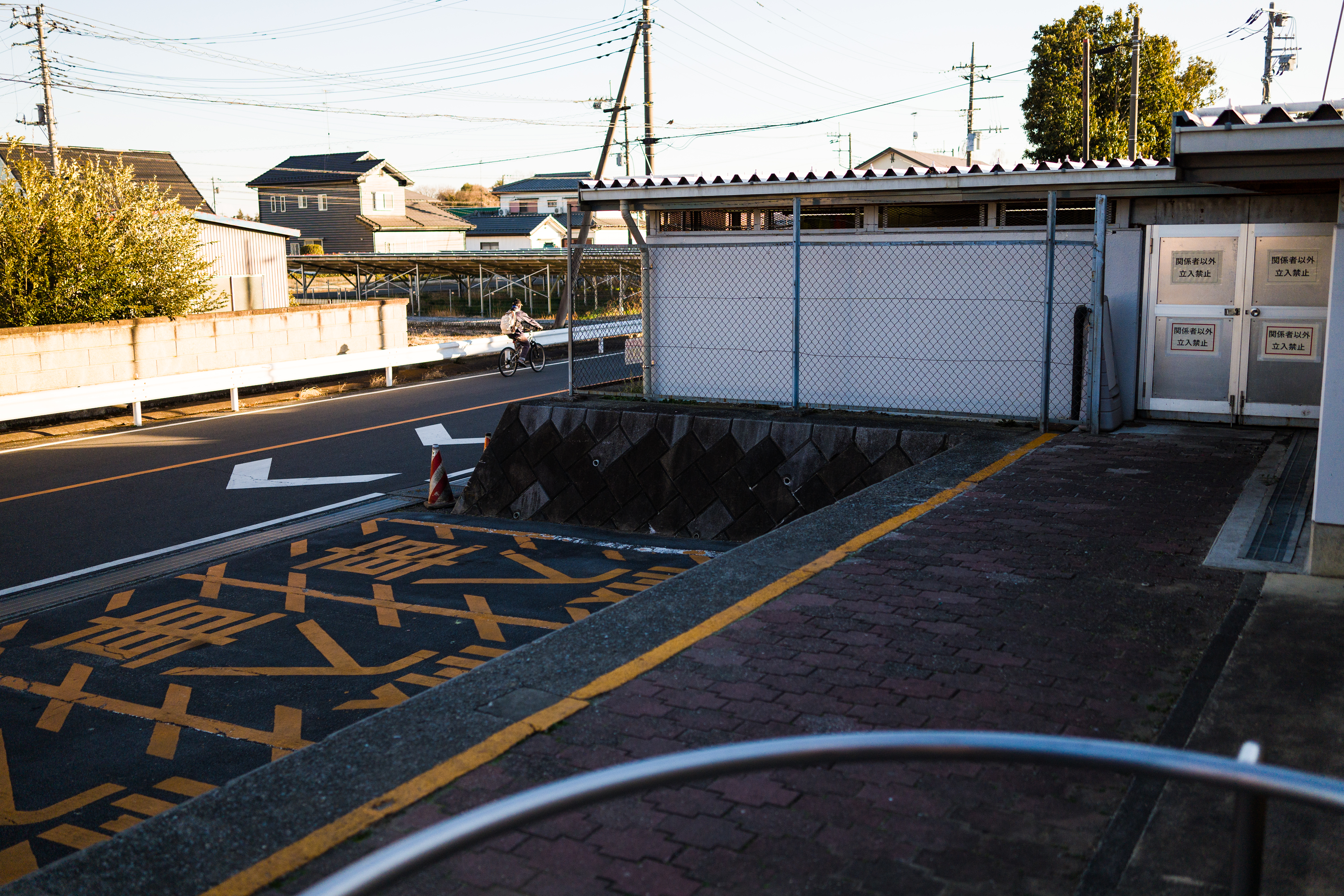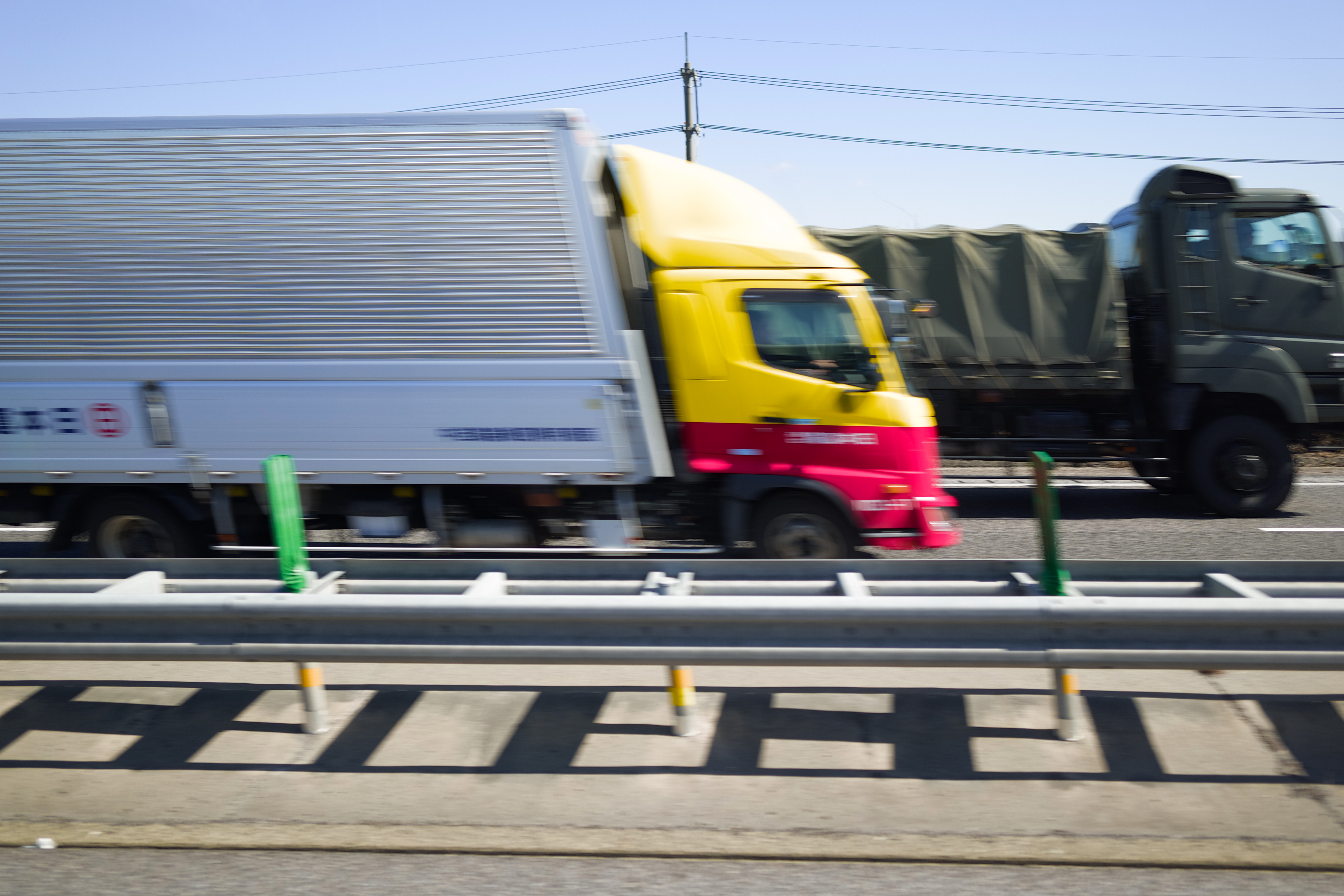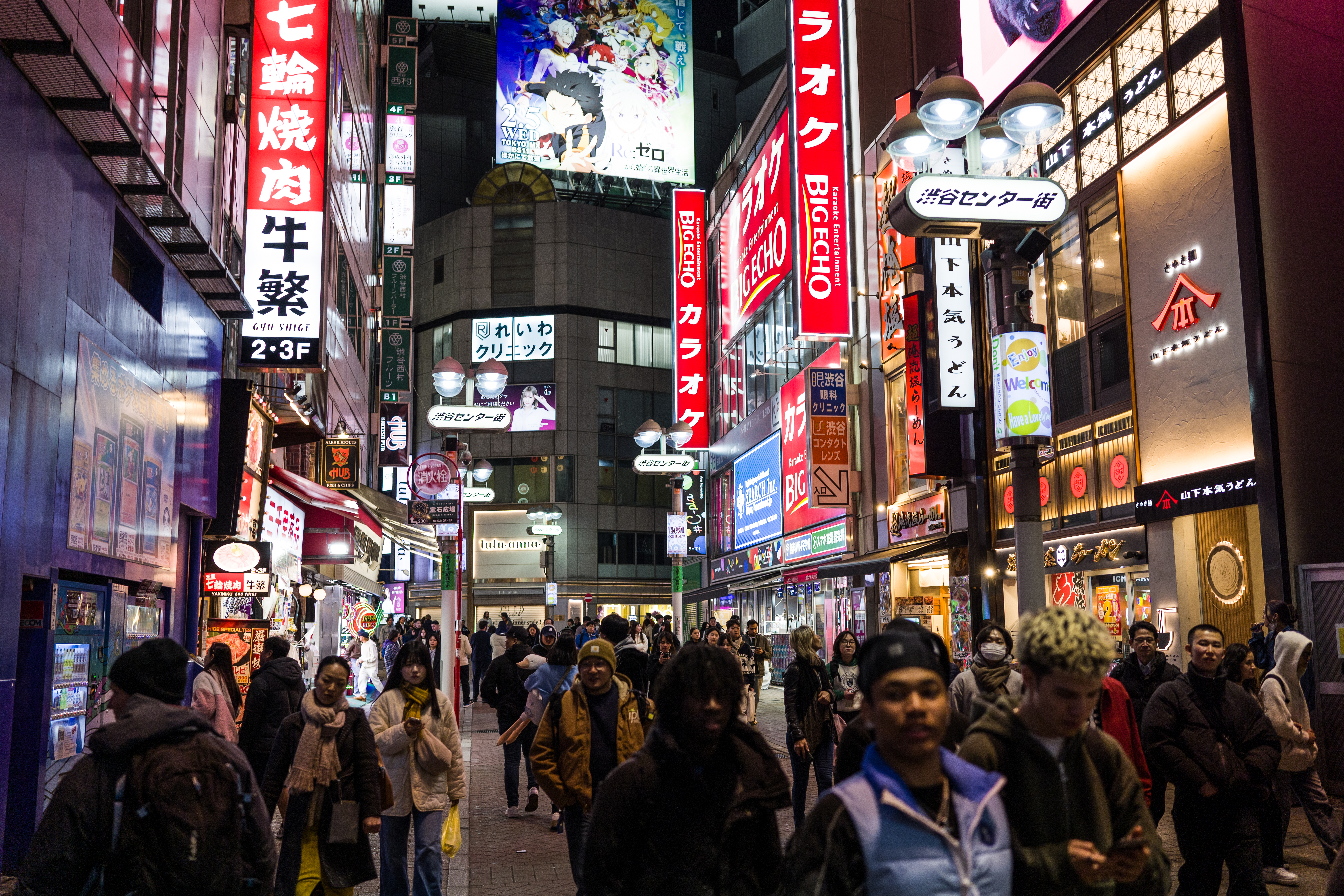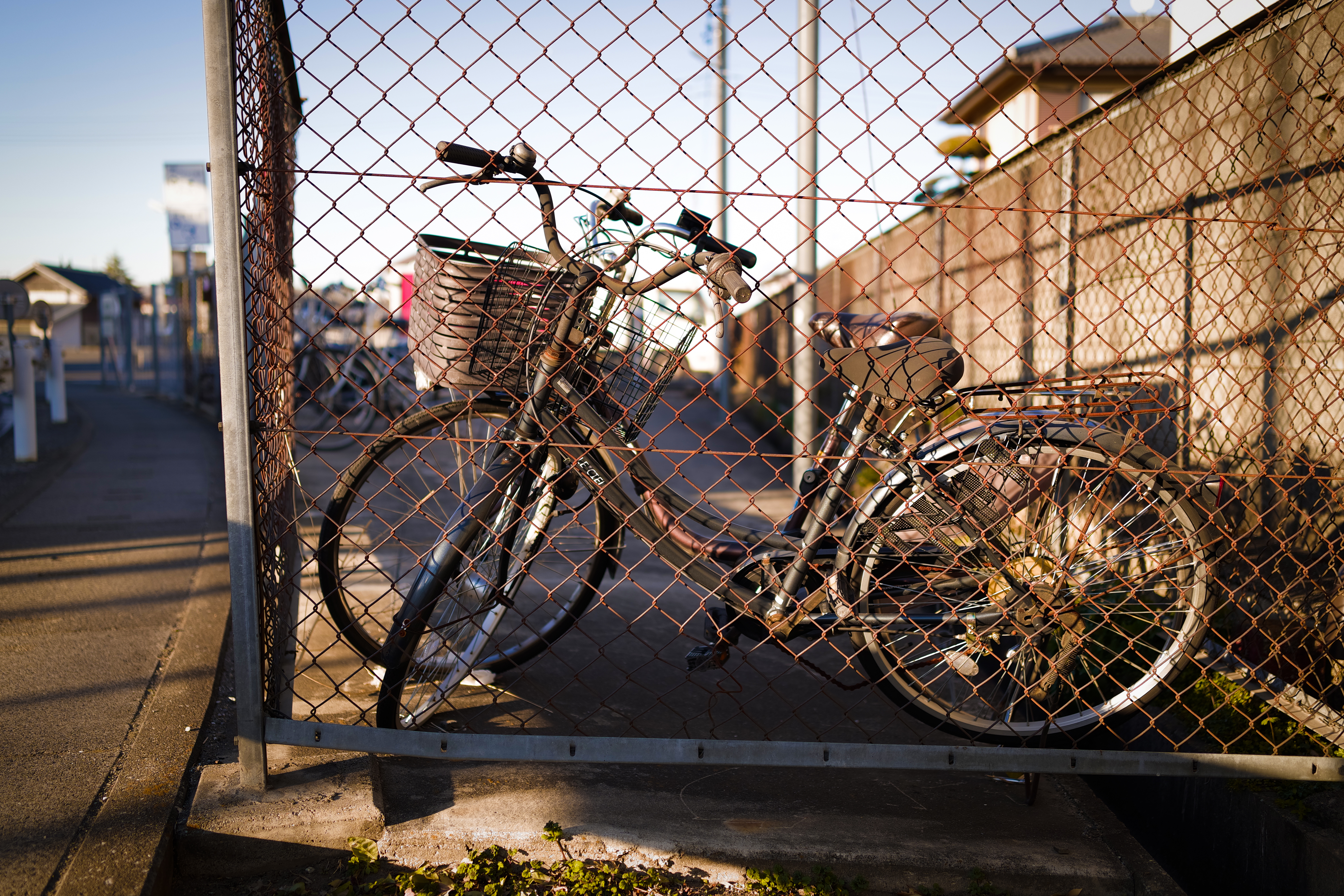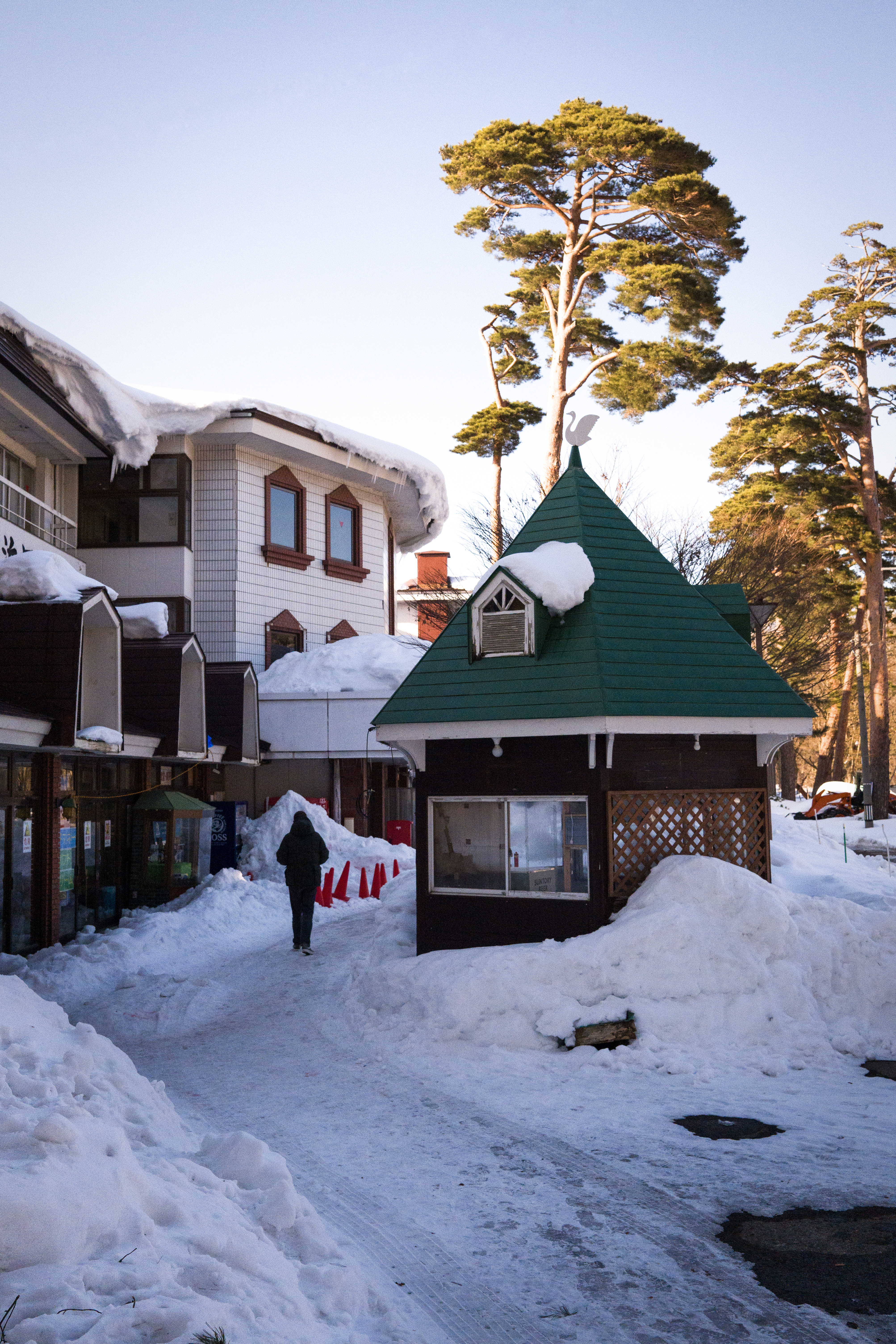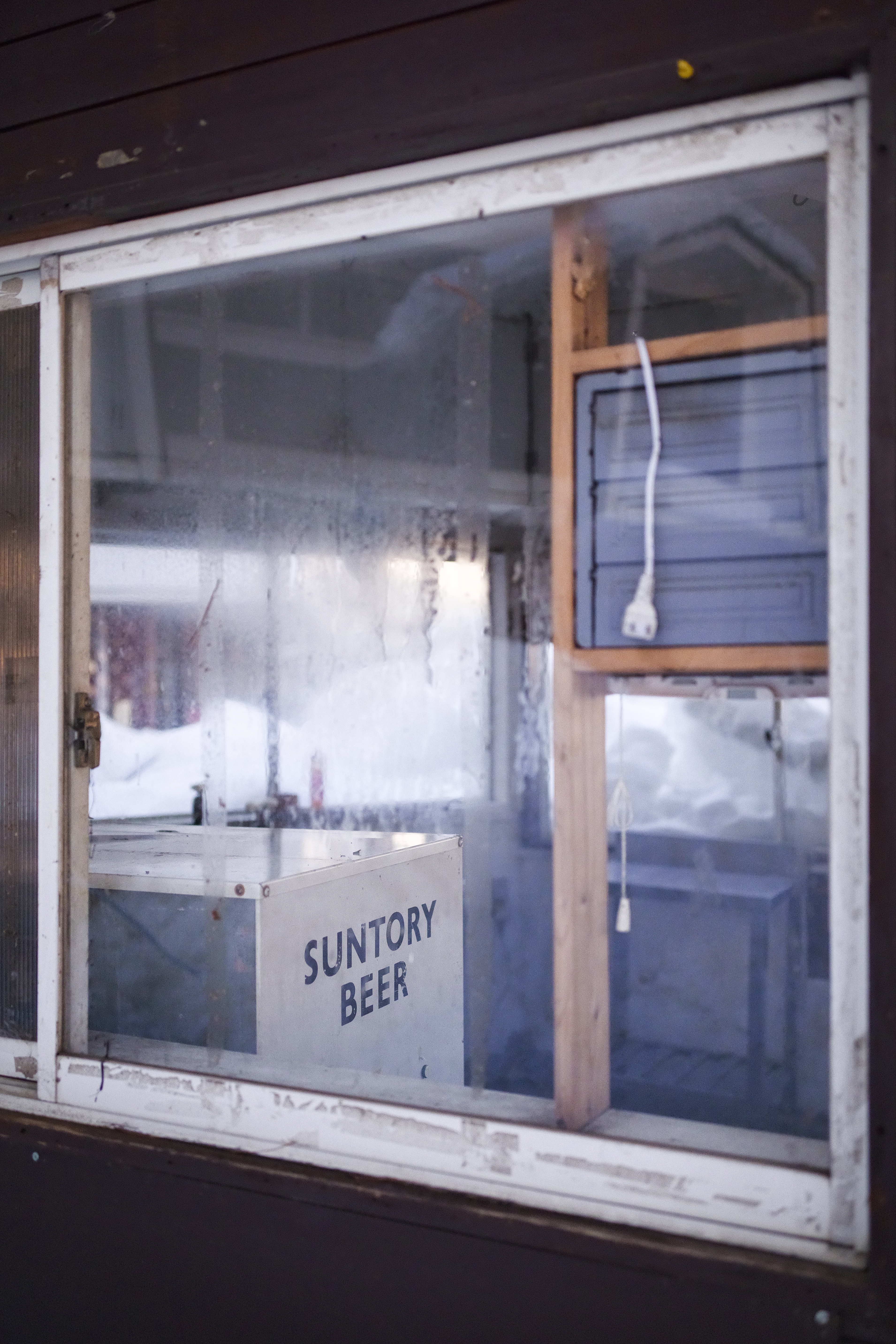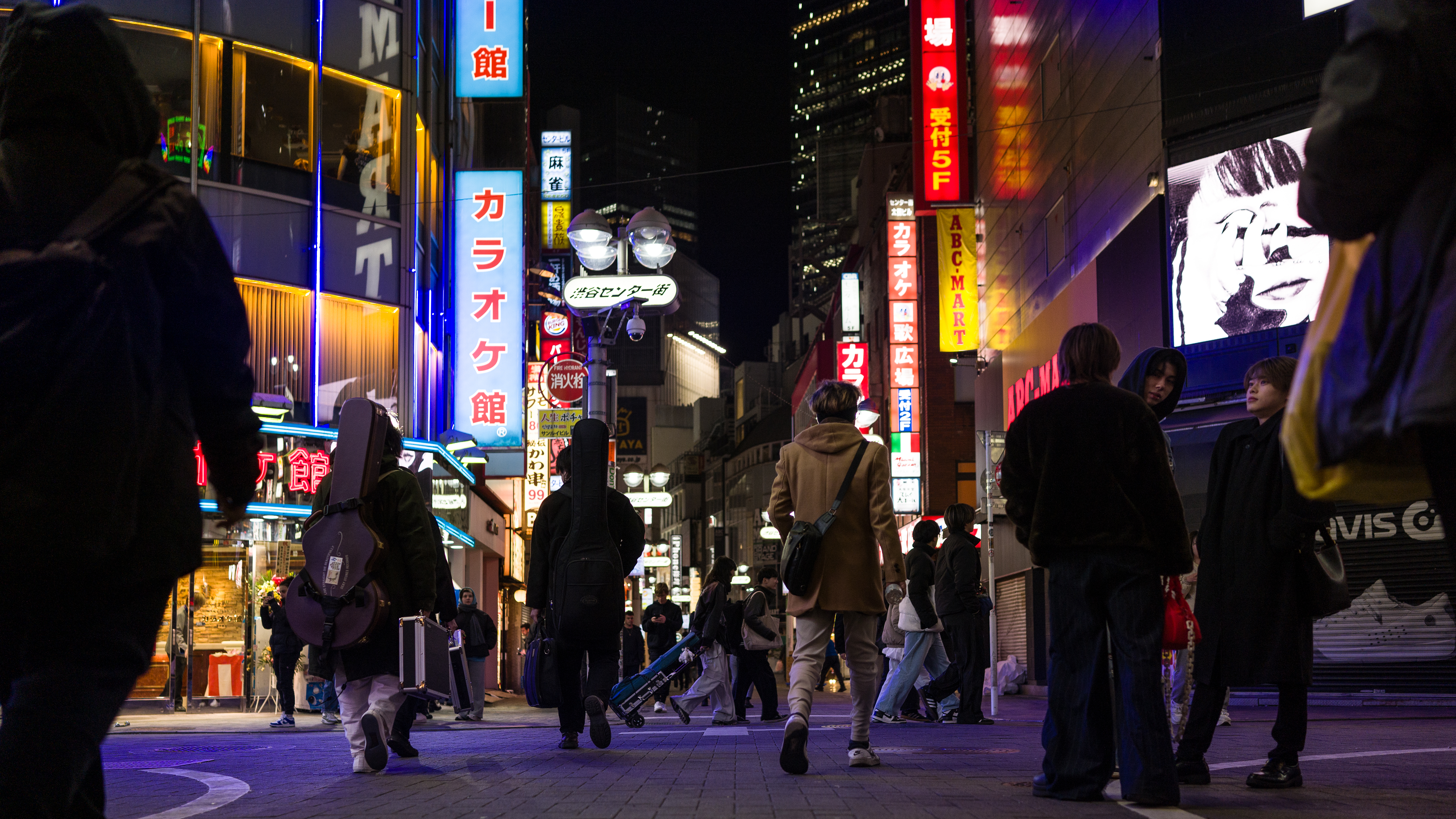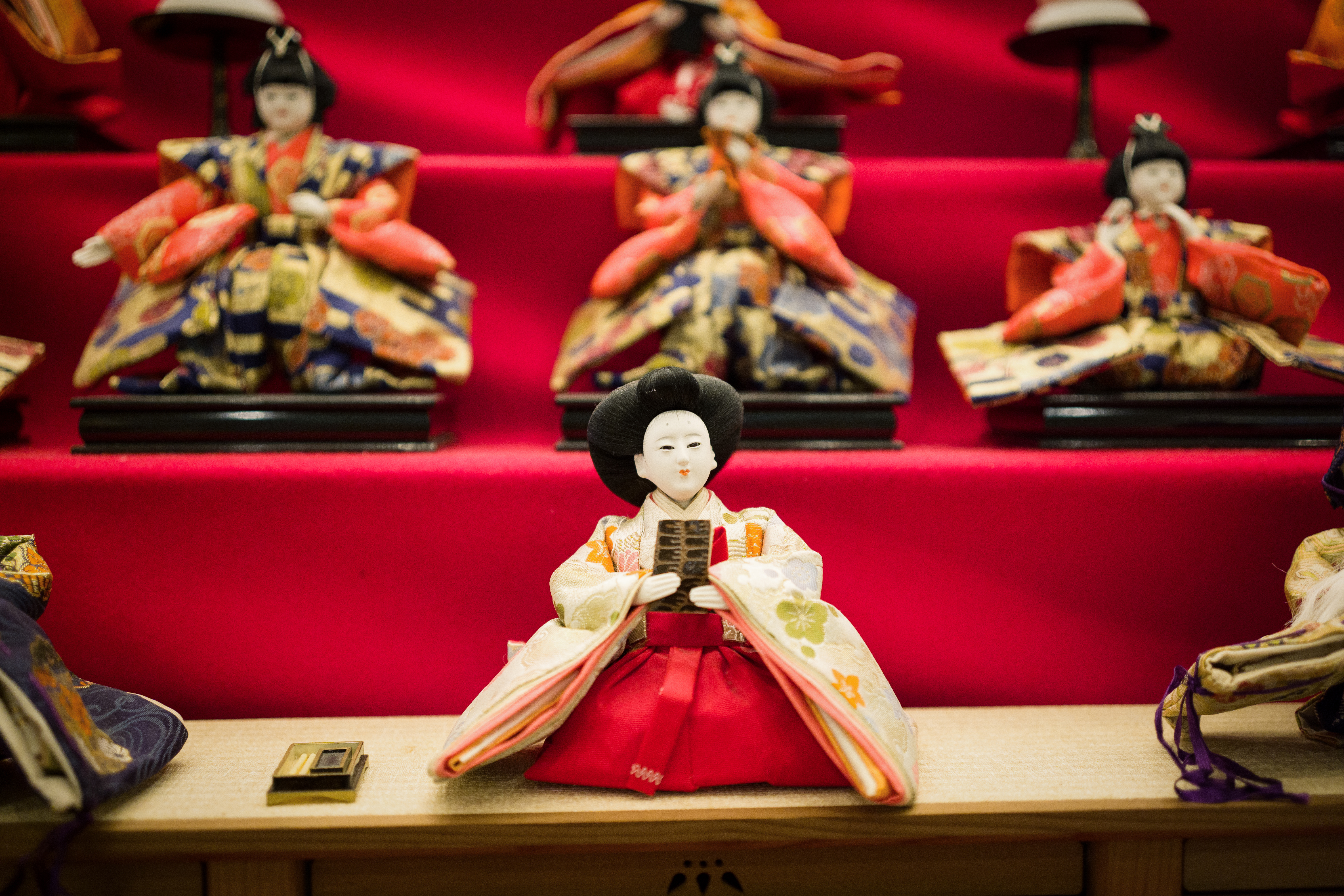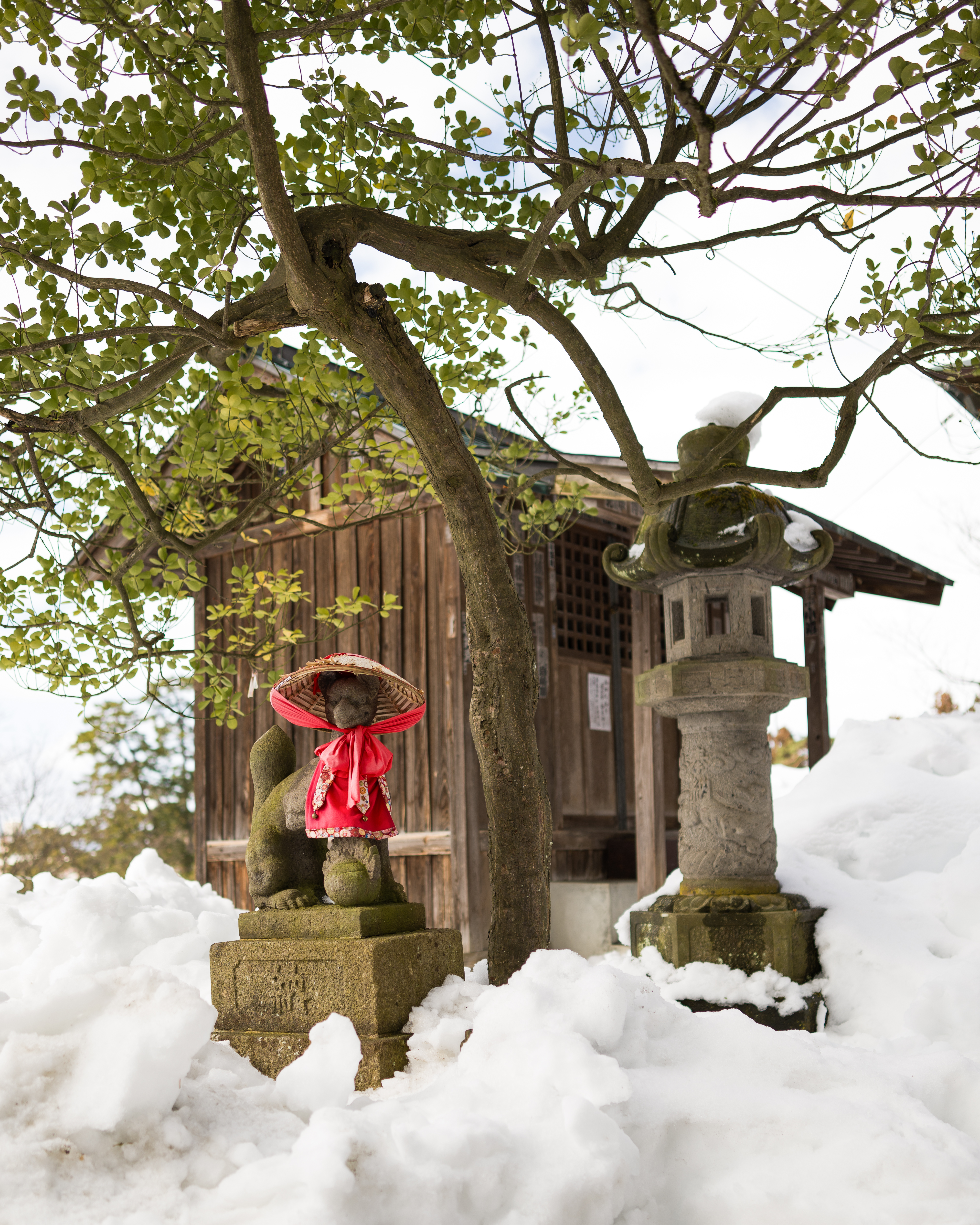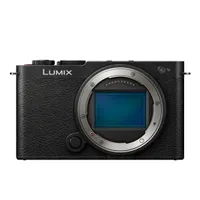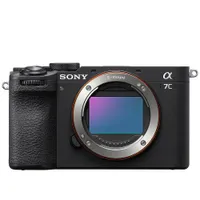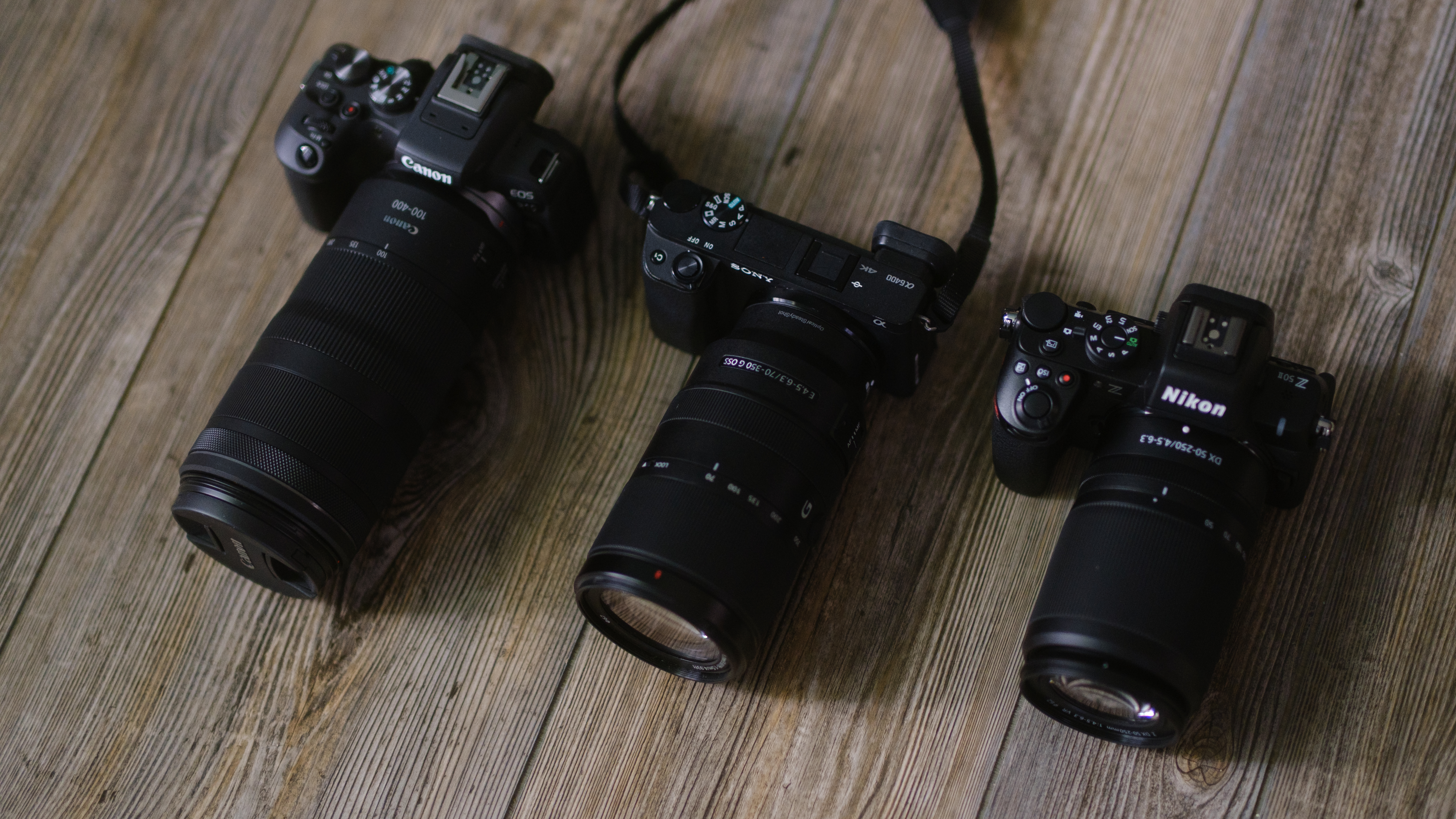Digital Camera World Verdict
I've tested hundreds of cameras, but the Sigma BF is one of the few I would actually buy. Yes there's plenty missing, like an EVF or even a tilting screen, or a hotshoe or an HDMI port… but my phone doesn't have any of those and I still use it to take photos. Plus, the Sigma BF has the intangibles – namely that it inspires you to pick it up, like a luxury car inspires you to drive it. And that's why I kept reaching for the BF long after I'd finished reviewing it – even over far more capable bodies. I can't in good conscience call it a five-star camera, given what's missing, but the Sigma BF is truly gestalt – and there is far more here than what seems to be missing.
Pros
- +
Jaw-dropping design
- +
Beautiful image quality
- +
230GB internal memory
- +
Makes you want to shoot
Cons
- -
No viewfinder
- -
Fixed screen
- -
Conservative battery life
- -
Minimal connectivity
Why you can trust Digital Camera World
Perhaps it’s an L-Mount Alliance in-joke, but the Sigma BF just out-Leicad Leica. Maybe the two companies placed a wager on whether Sigma would be first to outdo Leica’s cameras or Leica would be first to outdo Sigma’s lenses.
Either way, the Sigma BF is a very clever little camera for some familiar reasons. It’s so beautiful that it makes your heart skip a beat. It’s made from a single block of aluminum. It boasts bountiful internal memory. It strips physical controls and an EVF in favor of a friction-free touchscreen-driven experience. And it uses the L-Mount.
What has that got to do with Leica? Because back in 2014 it launched the Leica T – a camera that was also achingly beautiful, also made from a single block of aluminum, also had loads of internal memory, also ditched the controls and EVF, and also used the L-Mount (well, back then it was called the T mount).
But the Sigma BF is bigger, better, more in every way. And it’s hands-down the most gorgeous camera I’ve ever seen, let alone used – not since the Hasselblad X1D has a modern camera had the chutzpah to be so daringly different in how it looks. It’s truly a masterclass in industrial design.
The same ethos behind the way the camera looks – “radical simplicity” – lies behind the way it operates. Not only does it ditch almost every physical control, it also banishes every single icon from the rear screen. The idea is that the Sigma BF becomes the everyday camera that can replace your phone, for all those moments when we reach for our pocket instead of our camera bag.
So, the Sigma BF beat Leica at its own game. But does it beat today’s cameras?
Sigma BF: Price & availability
The Sigma BF is priced at $1,999 / £1,969 / AU$3,999 and goes on sale in April in either silver or black finish.
The best camera deals, reviews, product advice, and unmissable photography news, direct to your inbox!
For comparison, the similarly sized Sony A7C II is currently $2,200 in the US, while the similarly specced Panasonic Lumix S9 is around $1,400 right now. The entry-level Nikon Z5 comes in as low as $995, but if you’re looking for the best bang for buck then the powerhouse Canon EOS R8 is about $1,200 at the moment.
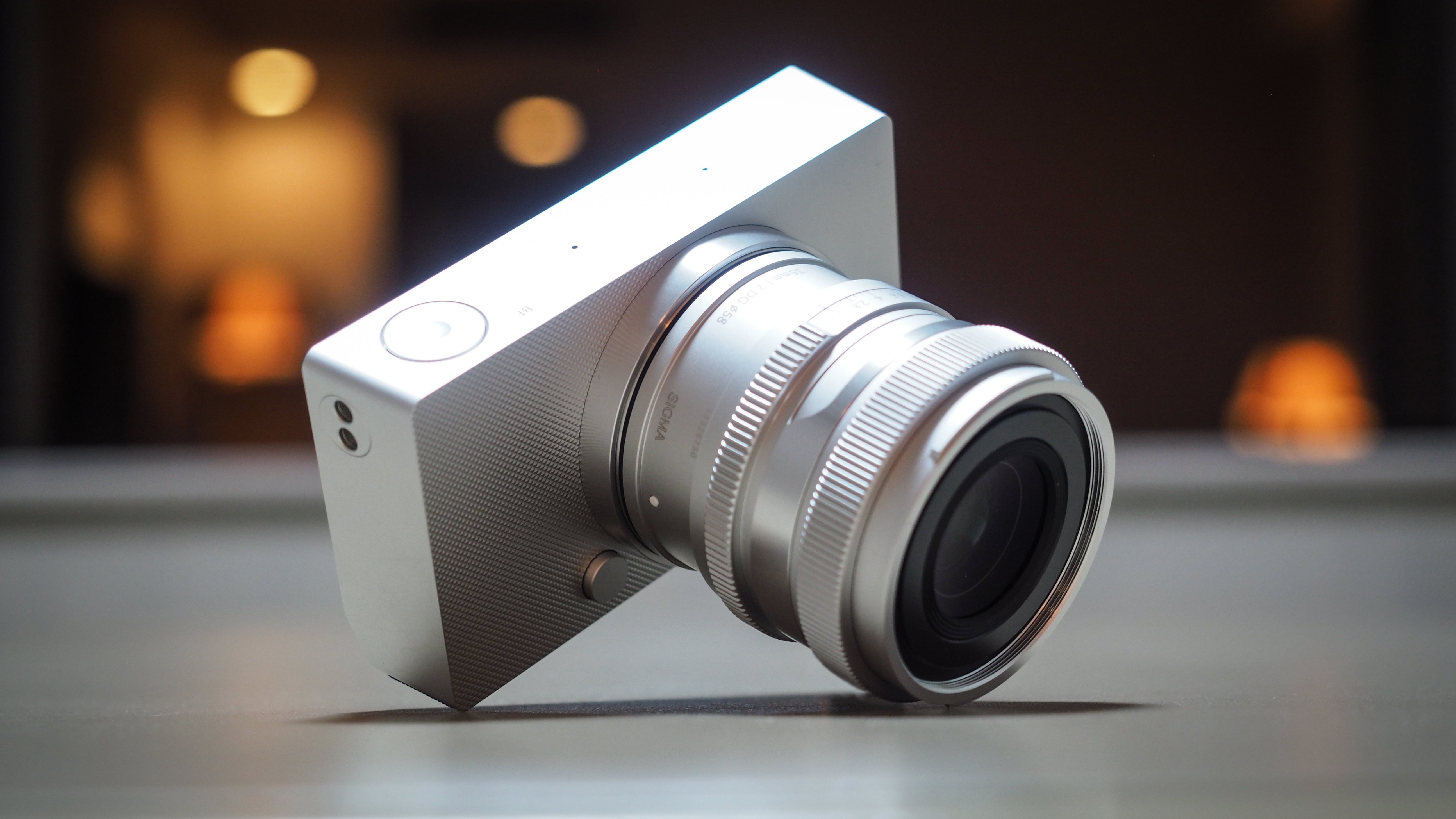
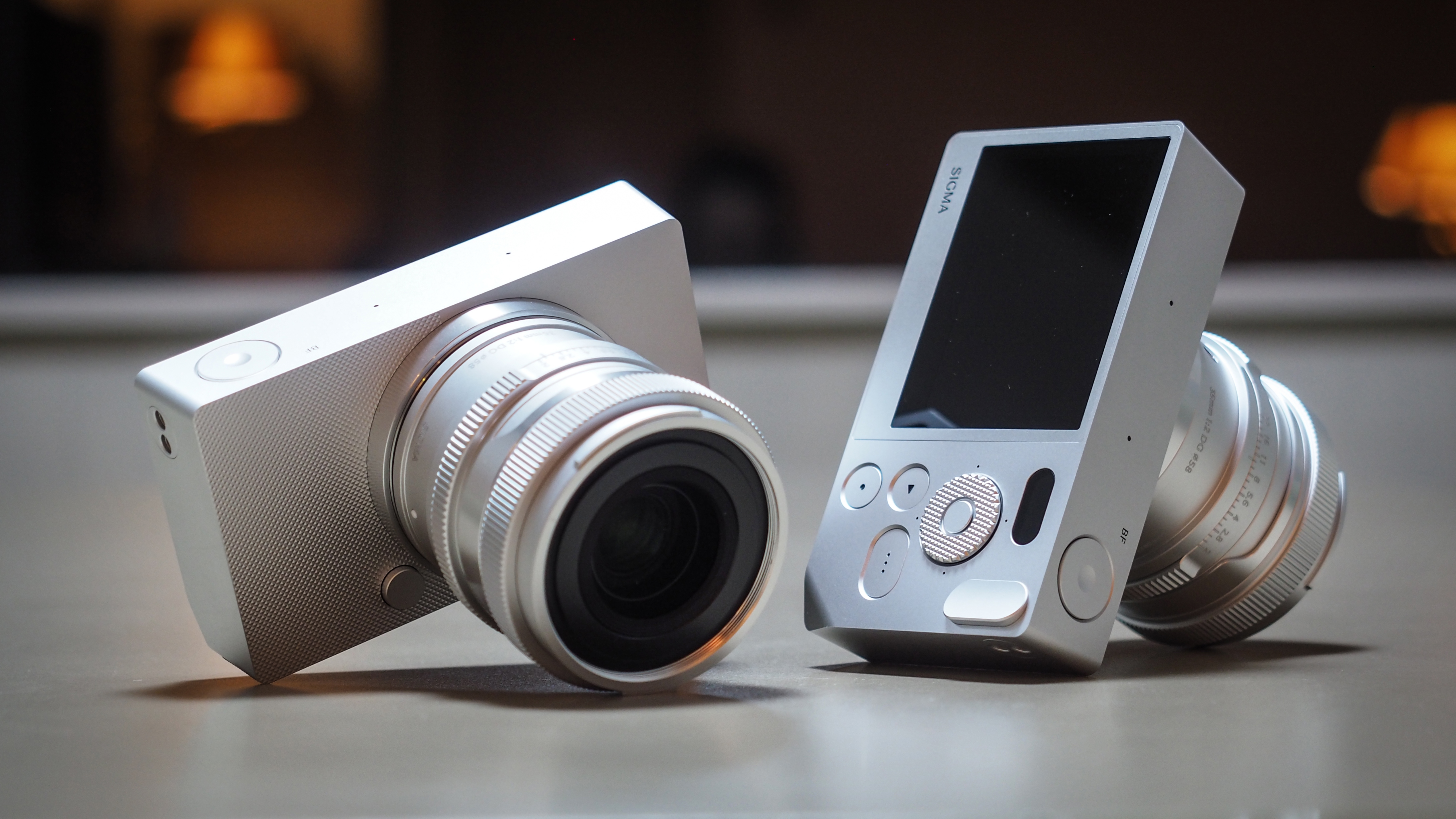
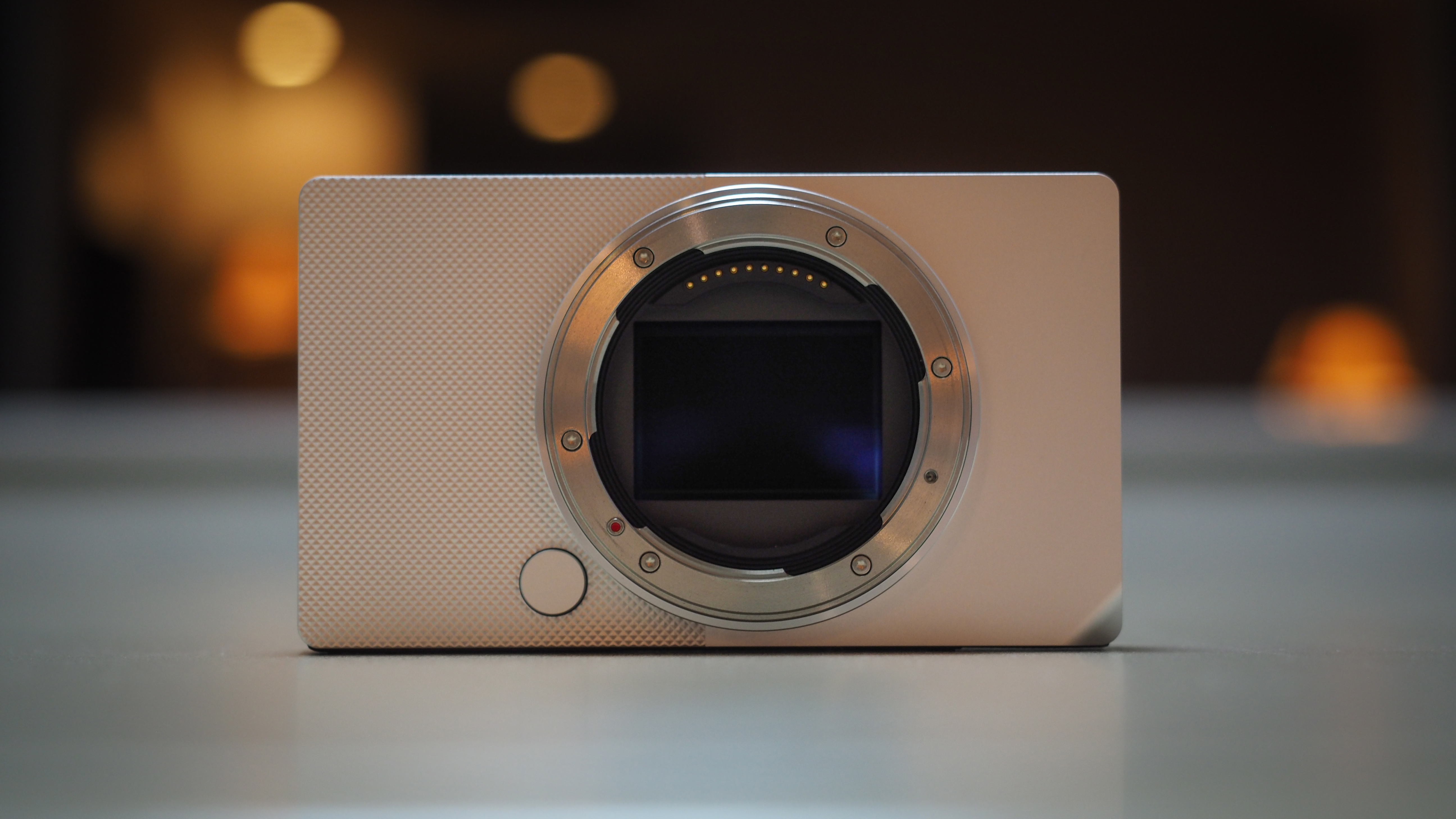
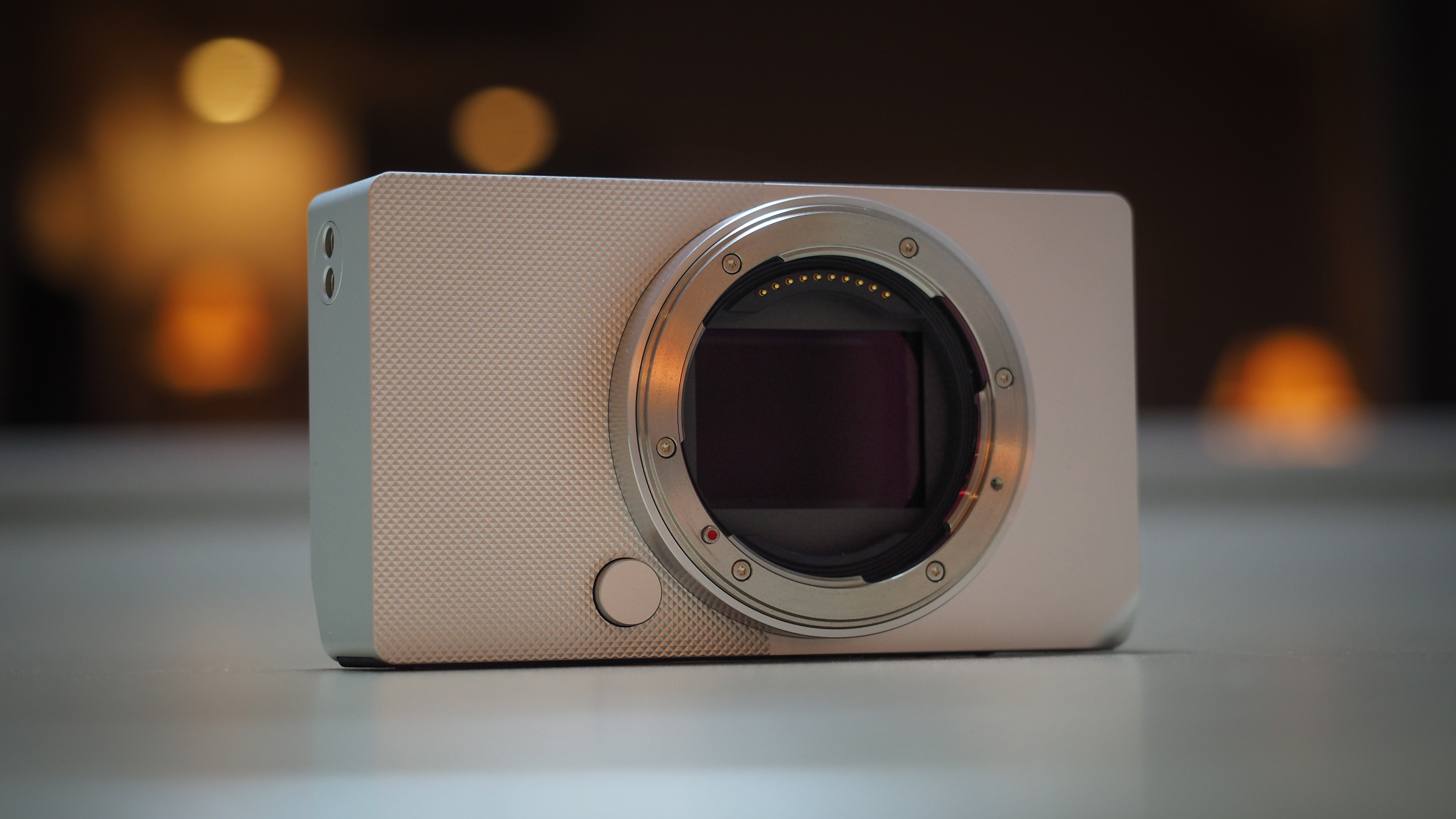
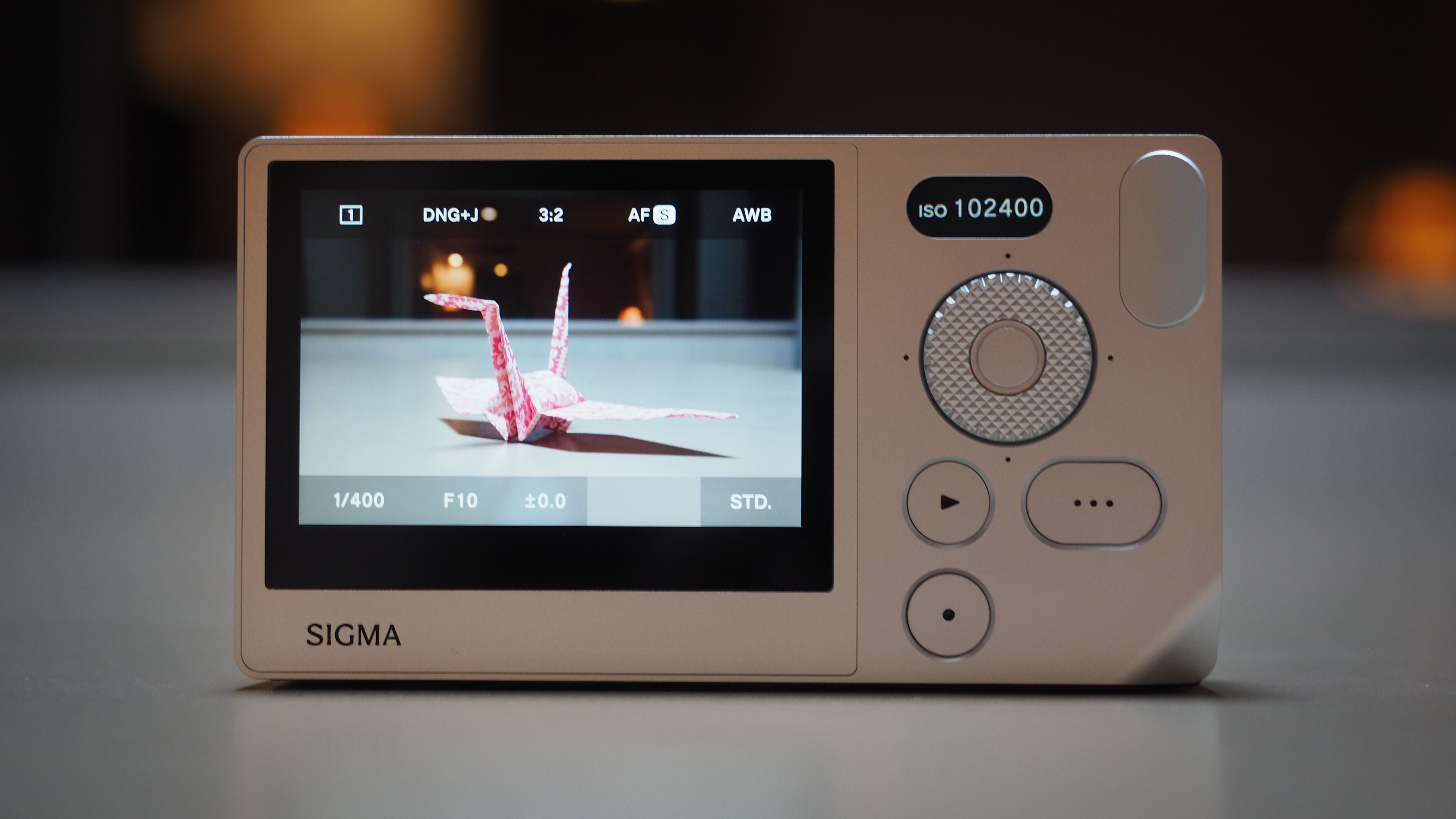

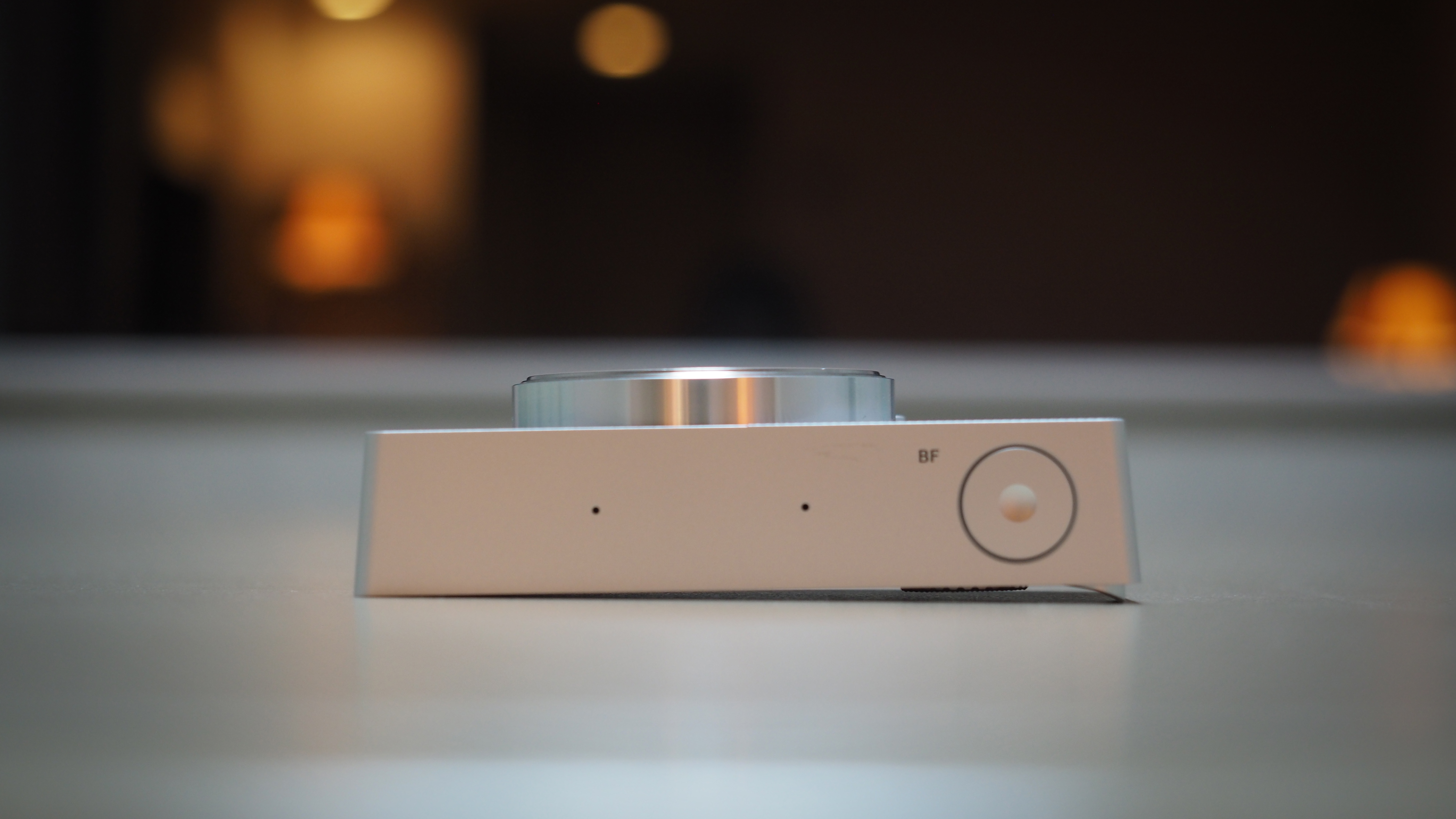

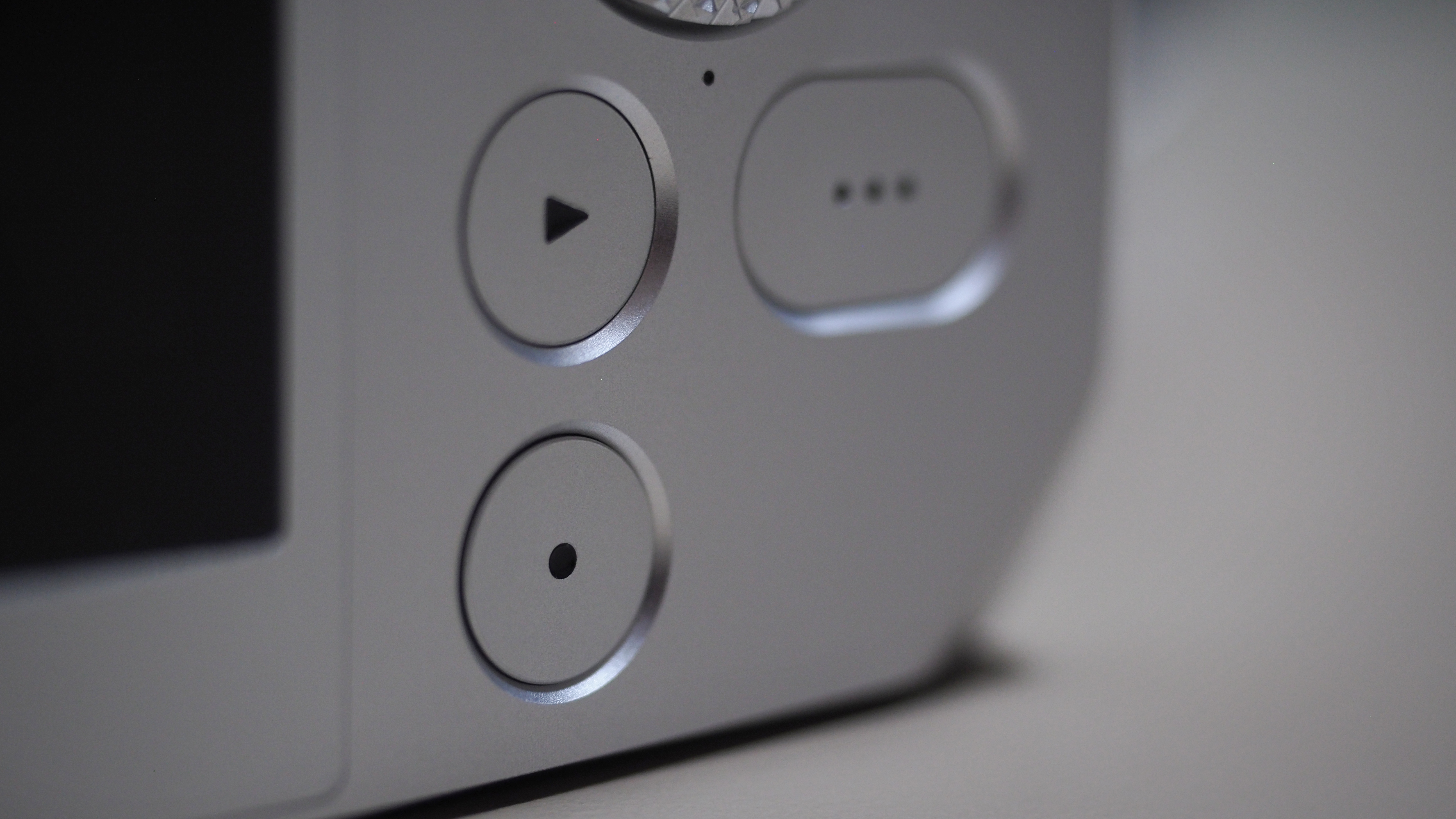
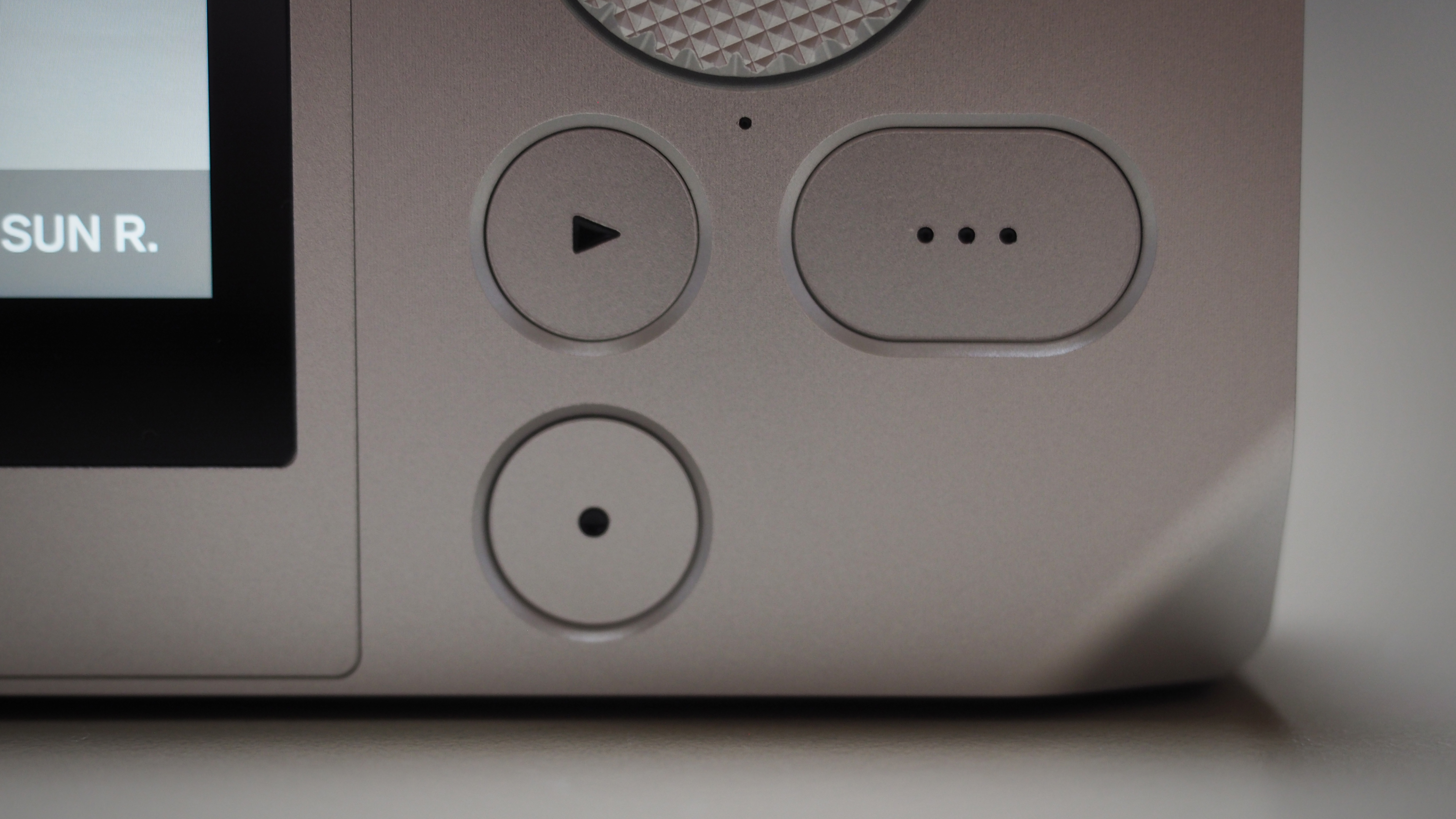

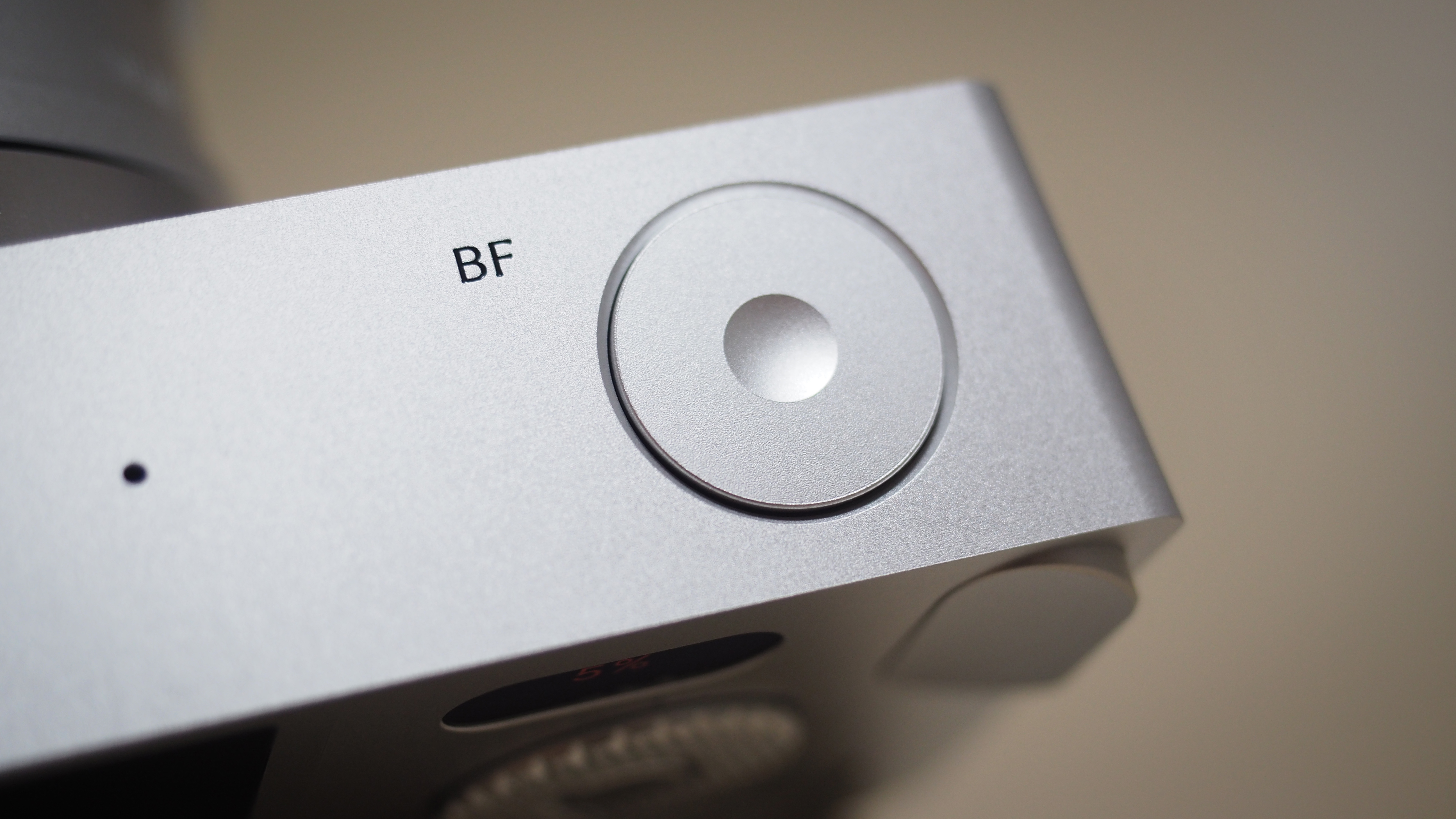
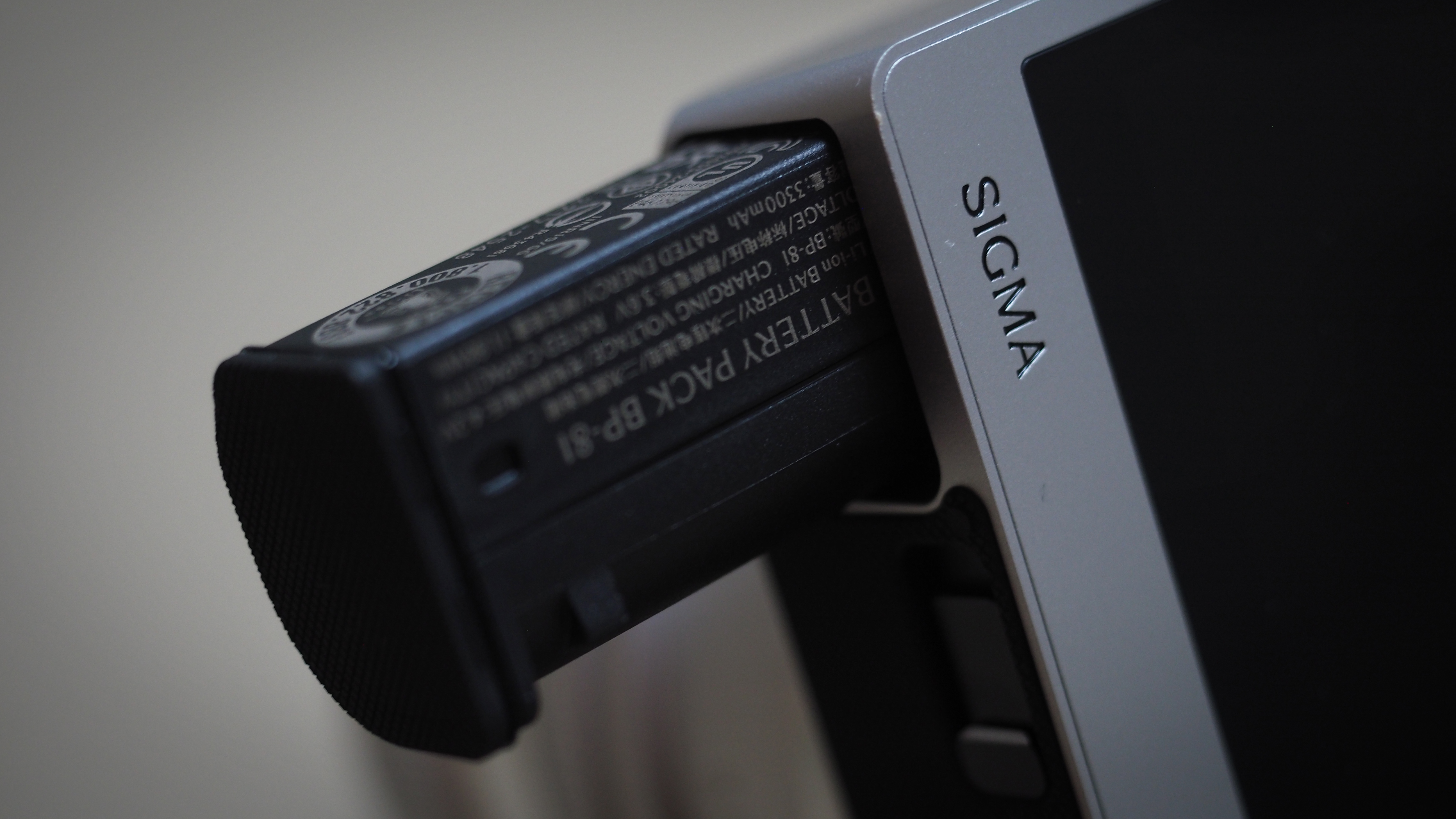
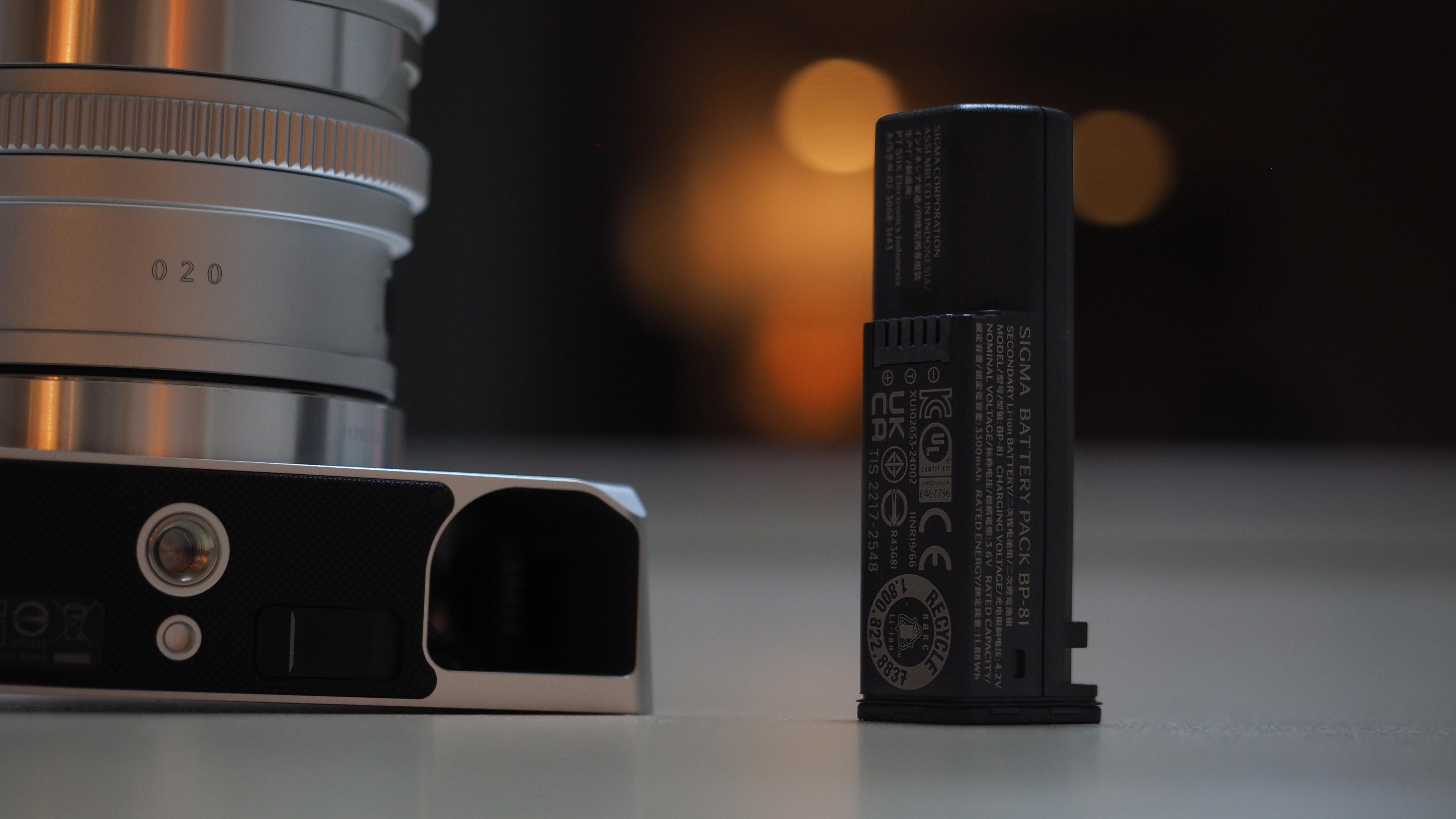
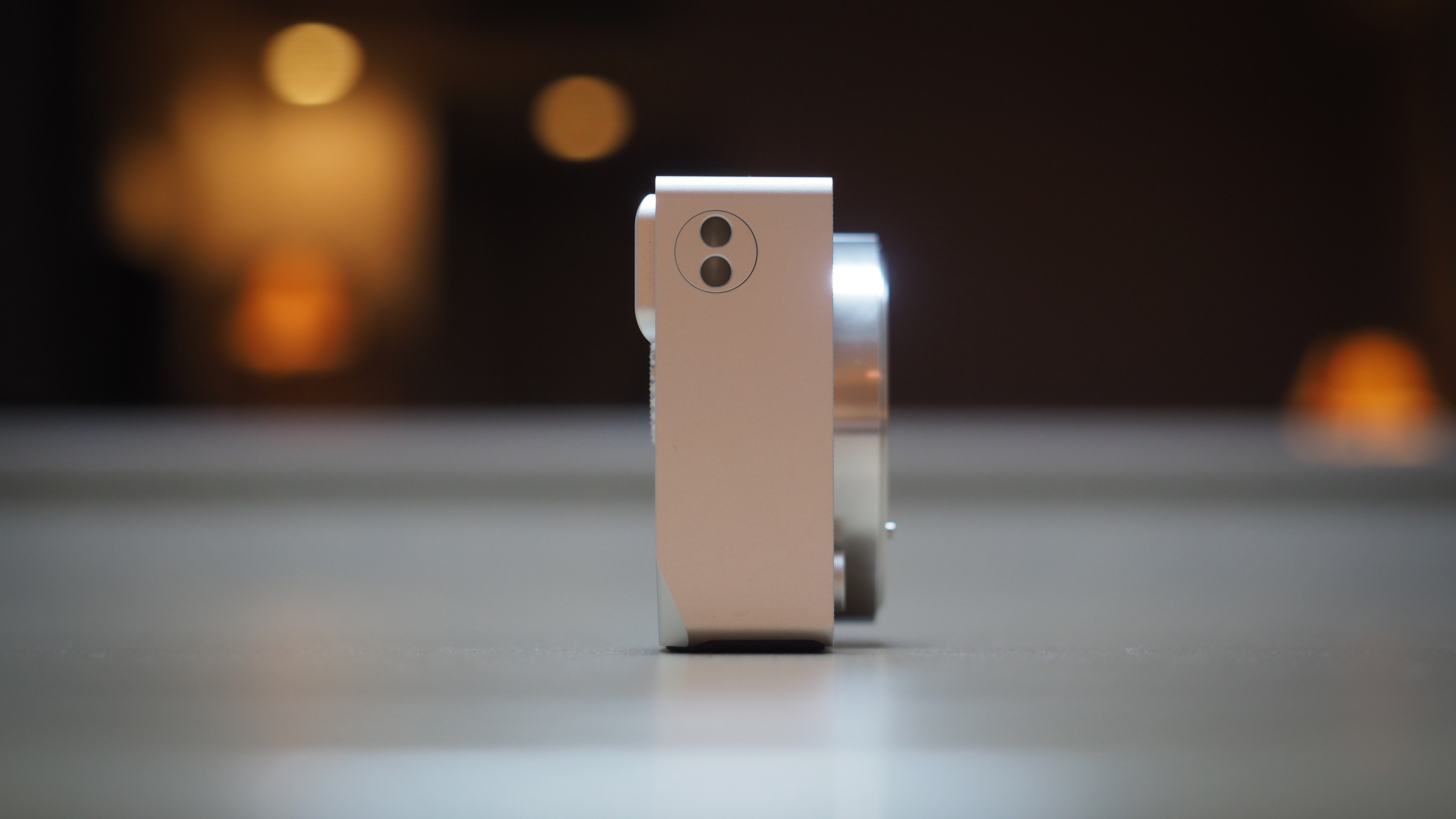
Sigma BF: Specifications
Sensor | 24.6MP back-side illuminated full frame CMOS | Row 0 - Cell 2 |
Mount | L-Mount | Row 1 - Cell 2 |
Stabilization | Video stabilization only (electronic) | Row 2 - Cell 2 |
Weather sealed | “Dust and splash resistant structure” | Row 3 - Cell 2 |
Max video resolution | 6K 30p, 4K 30p, FullHD 120p | Row 4 - Cell 2 |
Autofocus | Hybrid phase & contrast-detection | Row 5 - Cell 2 |
Sensitivity | ISO100-102,400 (exp 6, 12, 25, 50) | Row 6 - Cell 2 |
Max burst rate | 8fps | Row 7 - Cell 2 |
Viewfinder | None | Row 8 - Cell 2 |
Rear screen | 3.15-inch TFT touchscreen, 2.1 million dots | Row 9 - Cell 2 |
Memory | 320GB internal (no card storage) | Row 10 - Cell 2 |
Connectivity | USB-C | Row 11 - Cell 2 |
Dimensions | 130.1 x 72.8 x 36.8mm | Row 12 - Cell 2 |
Weight | 388g body only • 446g with battery | Row 13 - Cell 2 |
Sigma BF: Build & handling
Sigma’s “radical simplicity” manifests in a few ways, here. First of all, the absence of an electronic viewfinder – or any place to mount or connect one, since there is no hot shoe and no HDMI connection… nor a headphone jack, microphone jack, sync port or memory card slot.
The Sigma BF has only three “connections”: a USB-C port, a tripod mount and a single strap lug. The USB port is used for both charging and transferring your images, since the camera opts for a whopping 230GB of internal storage rather than relying on cards.
The lack of hot shoe, mount points or HDMI does limit your ability to use flash, capture audio or connect an external monitor – and if you prefer a neck strap, rather than one for your wrist, you’ll need one that connects to the tripod mount.
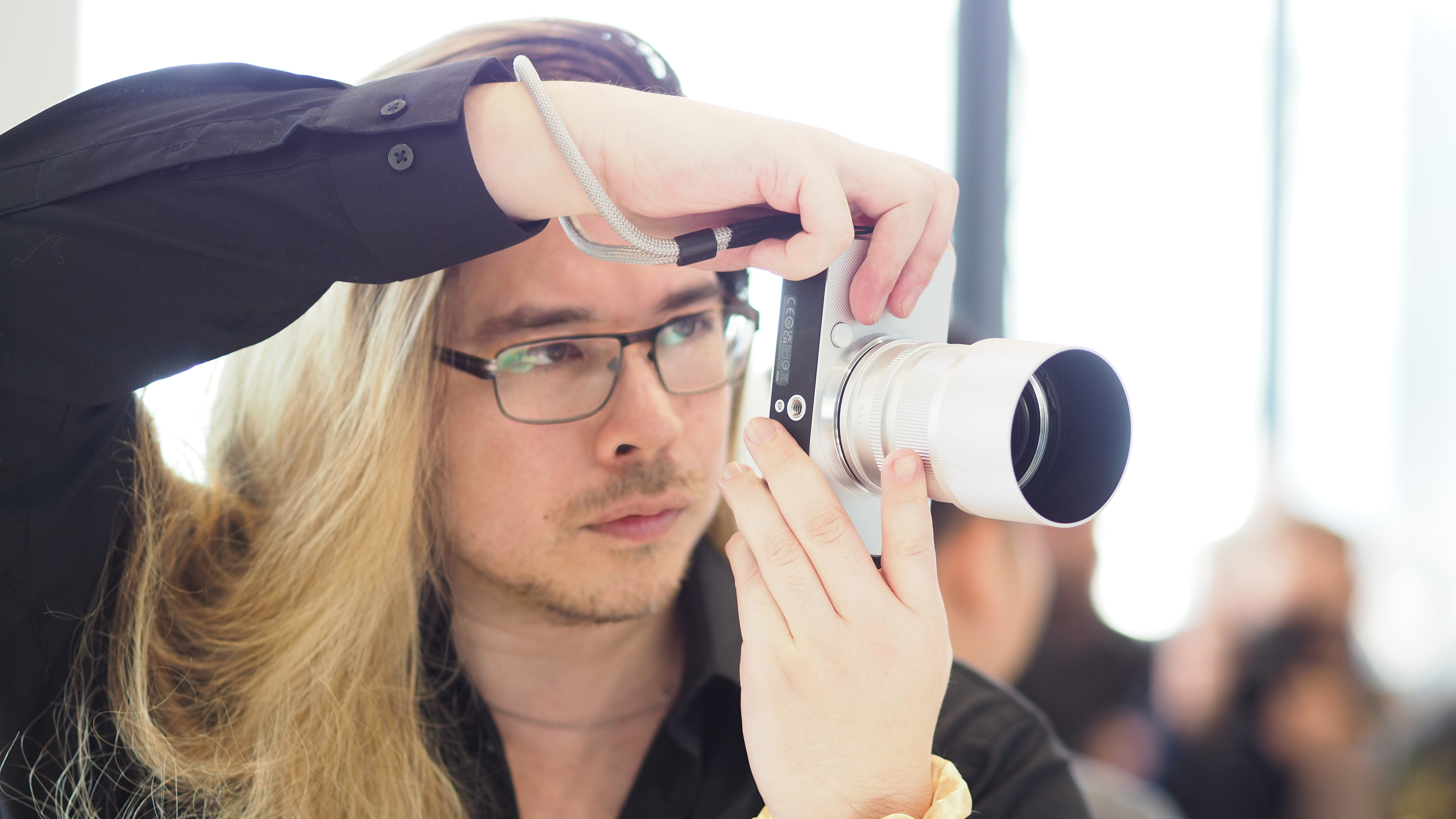
The minimalism extends to the camera’s controls; the Sigma BF presents you with a shutter, four buttons (power, play, menu and OK) and a clickable wheel on the back. This might come as a bit of a shock if you’re used to a DSLR or a pro sports body, but remember – this camera isn’t trying to be those things, it’s trying to be as streamlined as a smartphone.
I think we’ve established that the Sigma BF is a traffic-stoppingly pretty camera. Though, it should be said, that has a lot to do with the fact that I used it mainly with Sigma’s new silver 35mm and 90mm I-series primes. With regular black L-Mount lenses, it certainly looks a lot less attractive – though you could, of course, go for the black version of the BF. Be aware, however, that it’s a real fingerprint magnet.
Anyway, the camera is machined out of a single ingot of aluminum – a process that takes seven painstaking hours on gigantic machines in the Sigma factory in Aizu (which I was lucky enough to visit, and see the camera being assembled). This gives it an astonishingly robust feel and reassuring degree of heft, while somehow still being incredibly light at just 446g.

It evokes the same feeling of tangible quality as other cameras machined from a single piece of metal, like the Olympus PEN-F and the aforementioned Leica TL. The result is a body without a single visible screw hole, for an incredibly elegant finish.
However, unlike the PEN-F (which featured a leatherette finish) and TL (which had soft, sexy curves), the Sigma BF is an unapologetically angular camera. While it has no sharp corners, it has hard lines and harsh edges – meaning that its ergonomics are far from friendly to hands (with the exception of the palm notch on the bottom-right of the body, which reminds of the Sigma SD Quattro).
I should point out that almost everybody I’ve spoken to felt that the camera was uncomfortable to hold for extended periods. And a few also pointed out that the lack of a front grip also made it hard to keep hold of.
All I can tell you is that I used the camera without any discomfort at all – although I did grow up using a Nintendo NES controller, which is similarly pointy, so maybe my hands are just immune to it. I’ve also never had a problem keeping hold of a camera without a grip (I don’t wear a strap, either) and had no issue holding the BF out over bridges or out of windows.
The camera boasts a “dust and splash resistant structure”, with Sigma pointing out that “although this construction allows the lens to be used in light rain, it is not the same as being waterproof”.
As with many cameras, it’s rated for use in temperatures from 32-104°F / 0-40°C – though be aware that using it in conditions beyond this range will have an impact on battery life (more on that in the Performance section), which is rated at 260 images / 60 minutes of video.
Sigma BF: Performance
How does the “radical simplicity” work in practice? Pretty well, actually. It took a hot minute to get used to the grammar of the Sigma BF’s interface, which is unlike anything I’ve ever used before, but after a little adjustment of muscle memory I was flying.
By default, the screen has no information on it whatsoever; all that’s displayed is the live view of your scene. A quick press of the OK button will discreetly display your settings around the edges of the frame, after which you highlight and click the one you want to assign to the wheel – which you can then rotate to manipulate exposure values, scroll through color presets and so on.
People often criticize cameras with only one control dial, but a lot of photographers shoot in a priority mode anyway – which I dare say is how the Sigma BF is intended to be used (it is aiming to replace the way you use your phone, after all). And if you mount a lens with an aperture ring, you don’t really lose any control anyway.
Shooting entirely via the rear screen is something you either vibe with or you don’t. Certainly if you live in a very bright environment, where there’s a lot of sun or snow, it can be hard at times to see the screen. But again, this is a device looking to replace your phone – so shooting on the rear screen is part of the deal. But hey, I shot a travel photography assignment in India using a camera with no EVF and it wasn’t a big deal.
However, since it’s the only screen, I would have loved it to tilt. Fixed rear screens should have died with DSLRs and, while I know it would have messed with the single piece of aluminum aesthetic, it messed with my ability to take quite a few street photography shots instead. But again, this is the same issue you have with a phone… so again, it’s simply part of the deal.
I was hugely impressed by the camera’s autofocus. Sigma’s AF tech has improved massively over the years, and I almost forgot that I could move my focus manually because the BF focused exactly what I wanted it to for about 90% of my shots without any guidance.
It has head, face and eye subject detection for humans and animals, and I was extremely pleased with its tracking performance as well. It occasionally locked onto a fence or a billboard while shooting a busy street scene, but all it needed was a tap on the screen to place a focus point.
Another big win came in the form of the color presets, some of which are on par with the Film Simulations in Fujifilm cameras. There are 13 in all (including the brand new RIch, a punchy oversaturated affair, and Calm, a soft cyan-heavy number) and some of them are truly sensational straight out of camera. I love that they enable you to pre-produce your shots, and capture them as you experiened them, rather than post-produce them until they lose all meaning.
I was worried about the lack of in-body image stabilization in the Sigma BF, mainly because I’ve owned cameras with IBIS for over a decade and my true ability to handhold is probably pretty shocking these days. But it was no problem at all and, amazingly, not one of my thousand or so shots has even a whisper of camera shake.
Unfortunately, the battery life is a bit of a pain point. I was averaging about 180 shots per charge, far short of the quoted 260 images. The situation was worse in cold conditions, where the aluminum body acted like a refrigerator for the battery and made it harder to pump out power.
It was great for an afternoon or evening of casual shooting, which is arguably its intended use, but if you’re planning on using it for sustained studio work then you might want to grab a couple of extra batteries.
Now, for the video. I can tell you that I tested it, and that the 6K 30p (or the 4K 30p to which it can be downsampled) footage is very good. You get 10-bit capture and you get Leica L-Log… but again, you don't get a microphone jack, headphone jack, any kind of shoe or any mounting points for a rig or cage. And of course, there's no IBIS.
So, despite that 6K 30p headline, I would not use this camera to shoot video. Why is it there, then? Because sometimes, being able to snap footage for Reels, Stories and TikToks is incredibly useful – and that's how I think you should consider the BF's video. A useful Brucie bonus, but not a major selling point.
Sigma BF: Samples
Sigma BF: Lab results
For our lab data comparison, we pitted the BF against the Panasonic Lumix S9 – another small and stylish full-frame L-mount camera. The Nikon Zf is here as an equally style-focussed full-frame alternative to the BF, while the Sony A7C II is a compelling BF rival on account of its compactness.
Resolution (line widths/picture height):

The BF resolves an equal amount of fine detail to the Nikon Zf throughout our tested sensitivity range and does well to almost match the resolving power of the 33MP A7C II.
Dynamic range (EV):
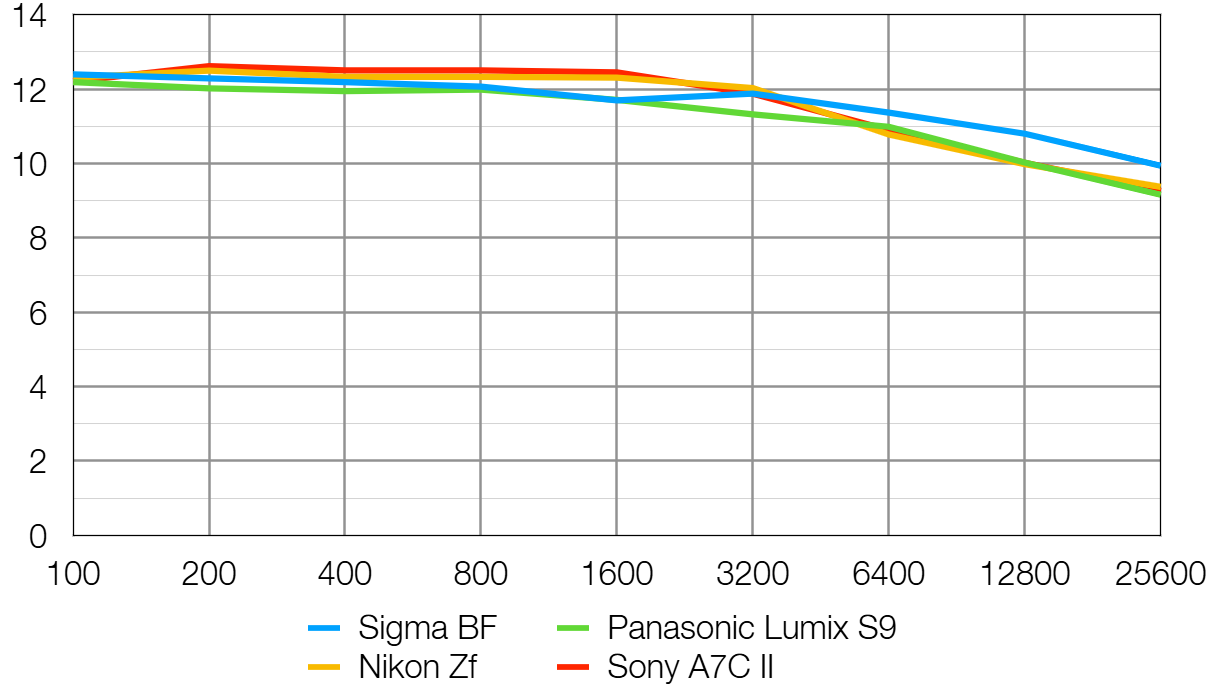
Dynamic range is a measure of a camera's ability to record extreme brightness ranges and still retain detail in the brightest and darkest parts of the scene. It's measured in EV (exposure values, or 'stops').
All cameras are closely matched at lower ISOs when it comes to capturing dynamic range, but push past ISO3200 and the BF starts to shine, pulling out a 1-stop advantage over the other cameras.
Signal to noise ratio (decibels):

This test compares the amount of random noise generated by the camera at different ISO settings as a proportion of the actual image information (the 'signal'). Higher values are better and we expect to see the signal to ratio fall as the ISO is increased.
The BF handles noise well, essentially matching the low noise levels of the Lumix S9 at all tested sensitivities.
Sigma BF: Verdict
Some people have clumsily compared the Sigma BF to the Panasonic S9, simply because they’re similarly small full-frame cameras with 24MP sensors and L-Mount lenses. But I think this misses the point entirely, because they are wildly different propositions.
For starters, this is the kind of camera you would see sitting on an architect’s desk. The kind of camera that Steve Jobs would design. And it really is the spiritual successor to the Leica T / TL / T2. I don’t think anybody would say any of those things about the S9.
Could the Sigma BF really become your everyday camera? Yes, I think it could. I had a riot of a time taking photos with this camera, whether I was running around a lake chasing ducks, stopping to snap shots of a mountain, ambling around a castle like a tourist or stealing street scenes on an evening in the city. This is the perfect camera to stow in a sling bag and whip out to catch those spontaneous moments when the photography gods compel you.
Were there times when I wished it had a viewfinder? Of course. Did I occasionally miss having dual control dials? Sure. But those are the criticisms I have about smartphones – only this camera makes the compromises worthwhile. Well, except for the battery life – I'd love to see that improved.
I think this is a camera for what Ricoh calls the "snap-shooter", but who wants lightyears better performance than a GR III. This is a camera for photographers to carry when they want something on their shoulder that isn’t their big heavy workhorse. And I think this is a camera for folks who want to feel inspired by the kit they use, the same way that a beautiful car inspires you to drive it.
The Sigma BF is a camera completely its own. Where almost all other cameras try to be all things to all people, the BF dares to be different and carve out a truly unique niche. If you’re the sort of person who’s comparing specs and measuring it up against other models, it isn’t for you; this is a camera you want just because you want it. And that’s okay – because I want it for that very same reason.
Sigma BF: Alternatives
Panasonic Lumix S9
While they’re very different cameras, they’re similarly specced and use the same mount. The S9 is the same sort of size and form factor, but with added in-body image stabilization and 6K video that offers open gate recording.
Sony A7C II
Another similarly sized camera, the Sony A7C II offers a higher resolution 33MP sensor and an EVF, but video tops out at 4K 60p (with a crop, or 4K 30p without one). The more mature E-mount also offers a greater lens selection.

James has 25 years experience as a journalist, serving as the head of Digital Camera World for 7 of them. He started working in the photography industry in 2014, product testing and shooting ad campaigns for Olympus, as well as clients like Aston Martin Racing, Elinchrom and L'Oréal. An Olympus / OM System, Canon and Hasselblad shooter, he has a wealth of knowledge on cameras of all makes – and he loves instant cameras, too.
You must confirm your public display name before commenting
Please logout and then login again, you will then be prompted to enter your display name.
